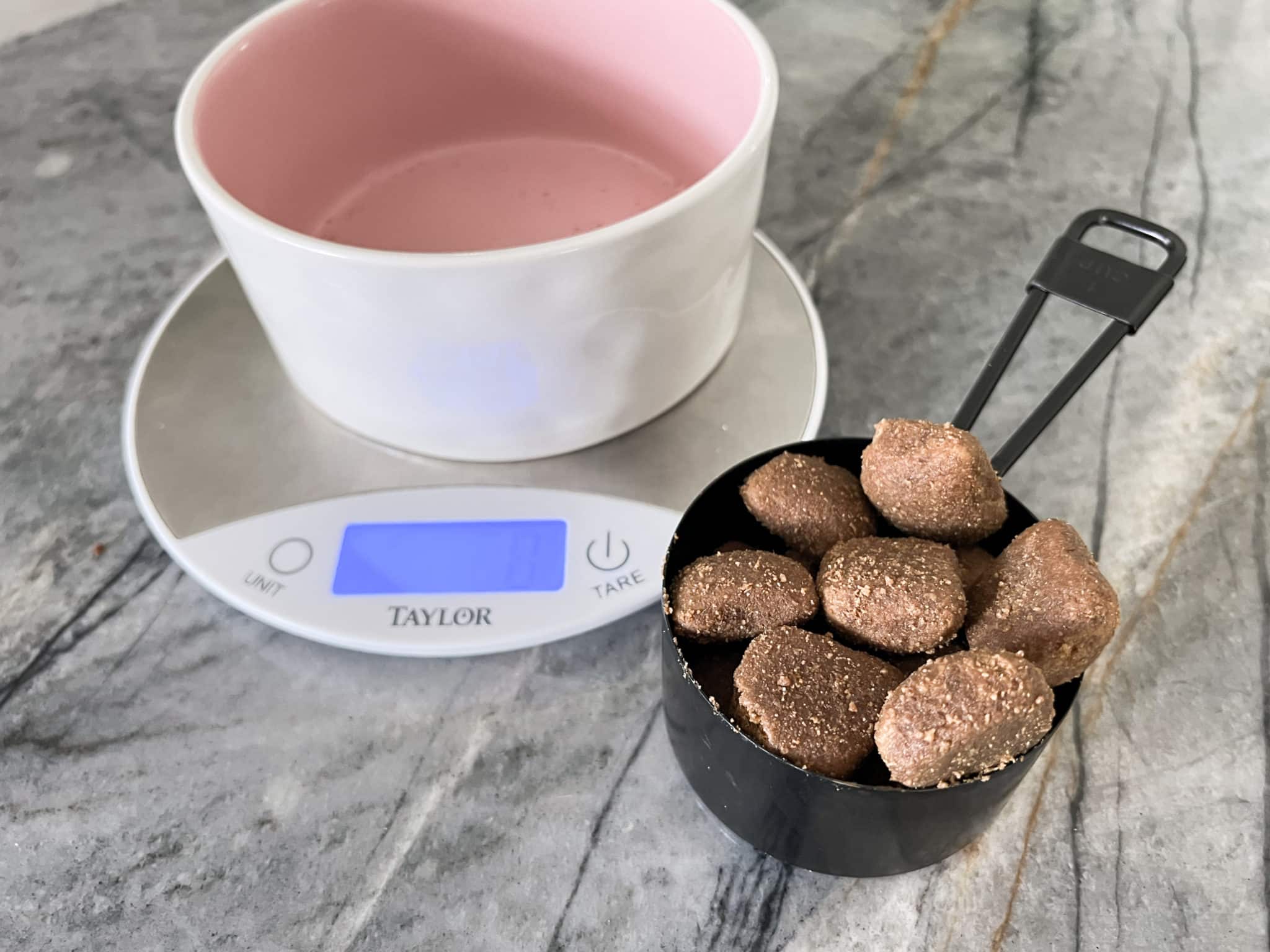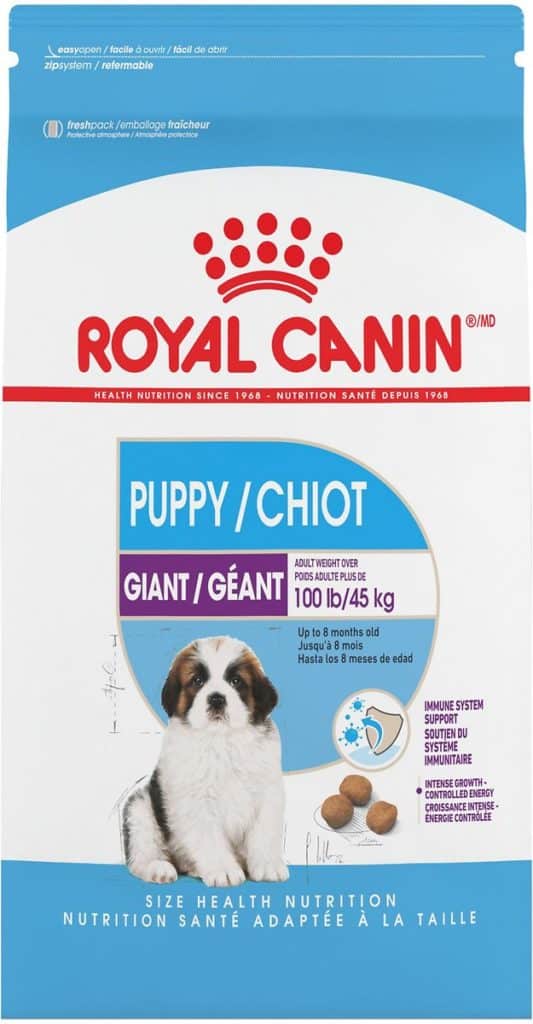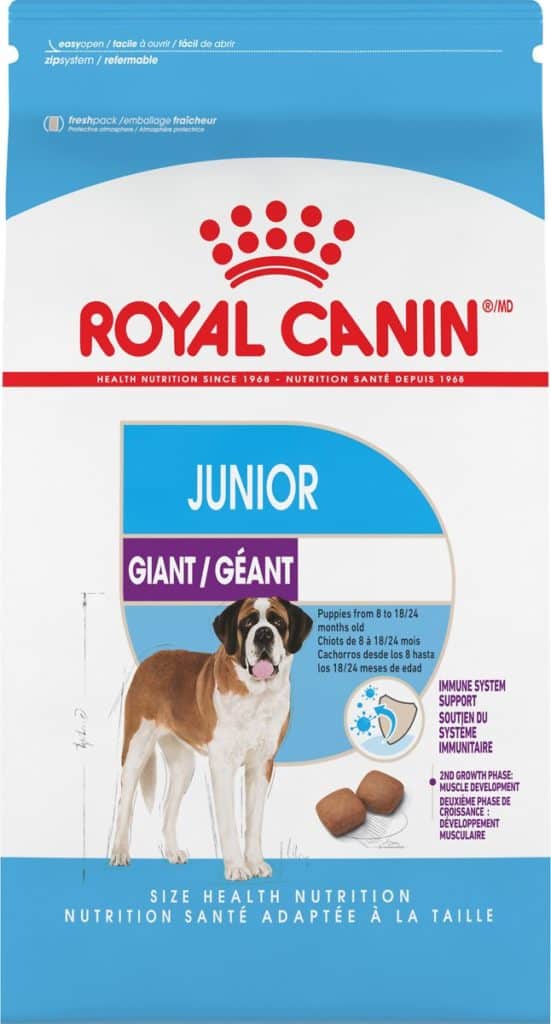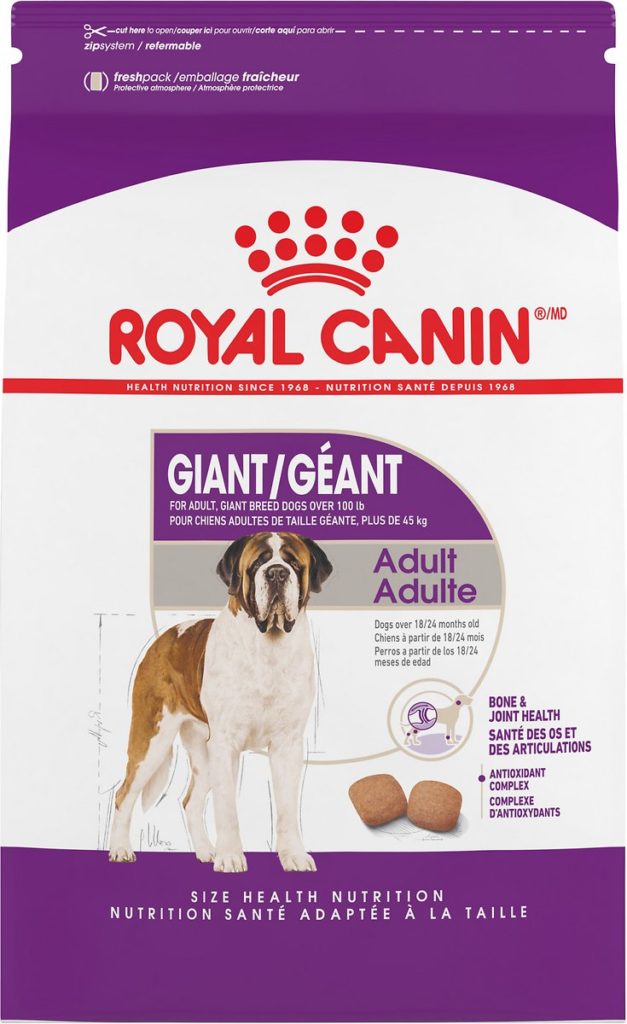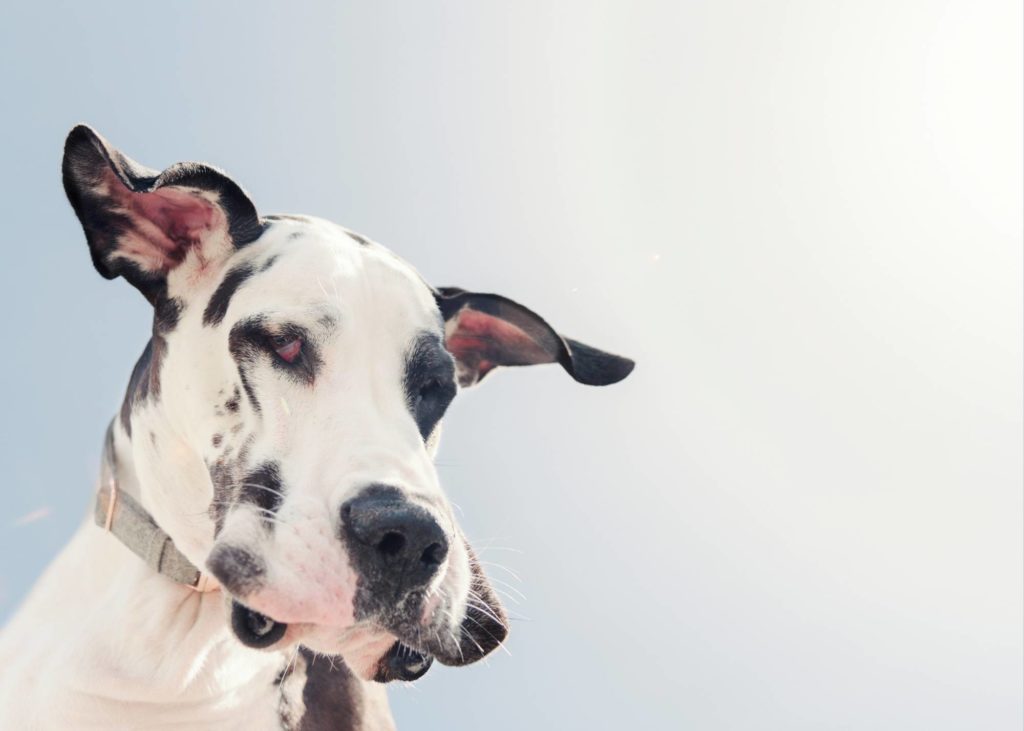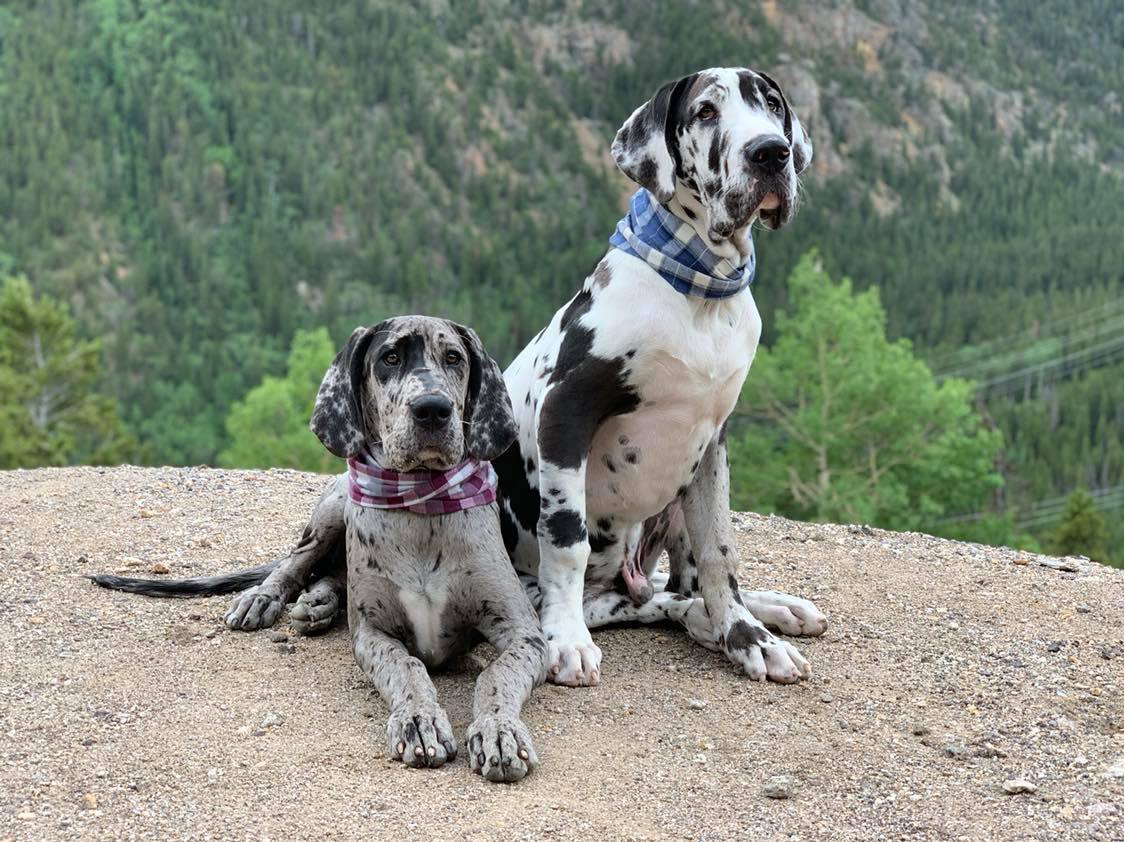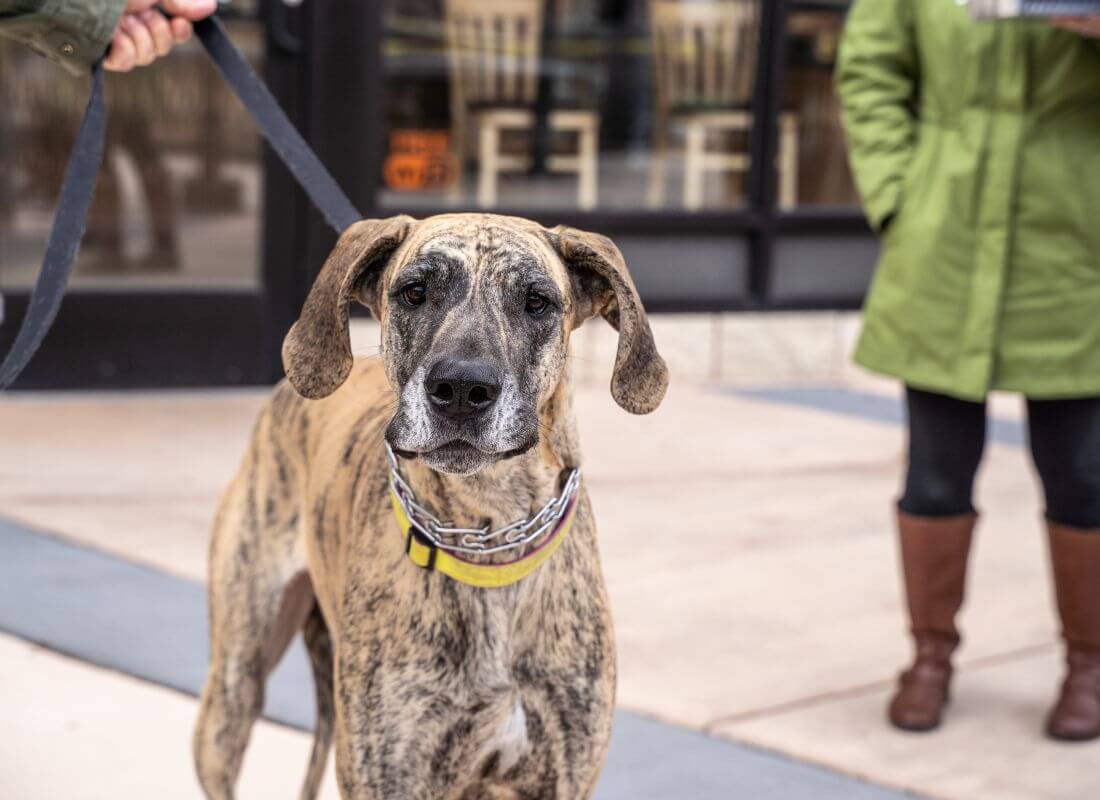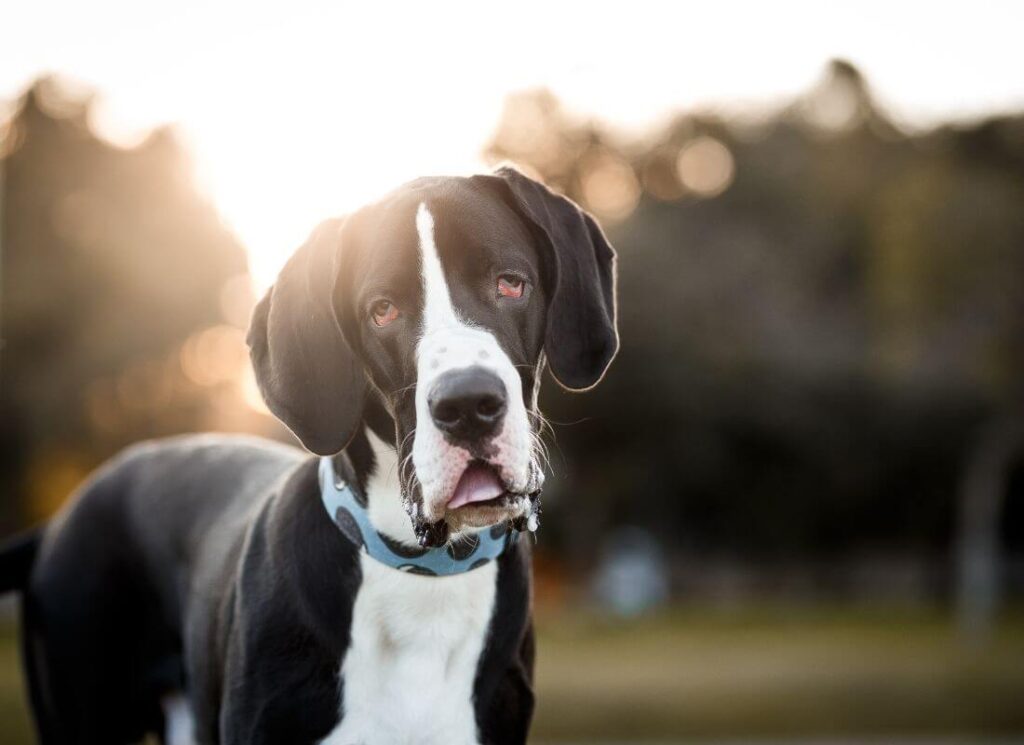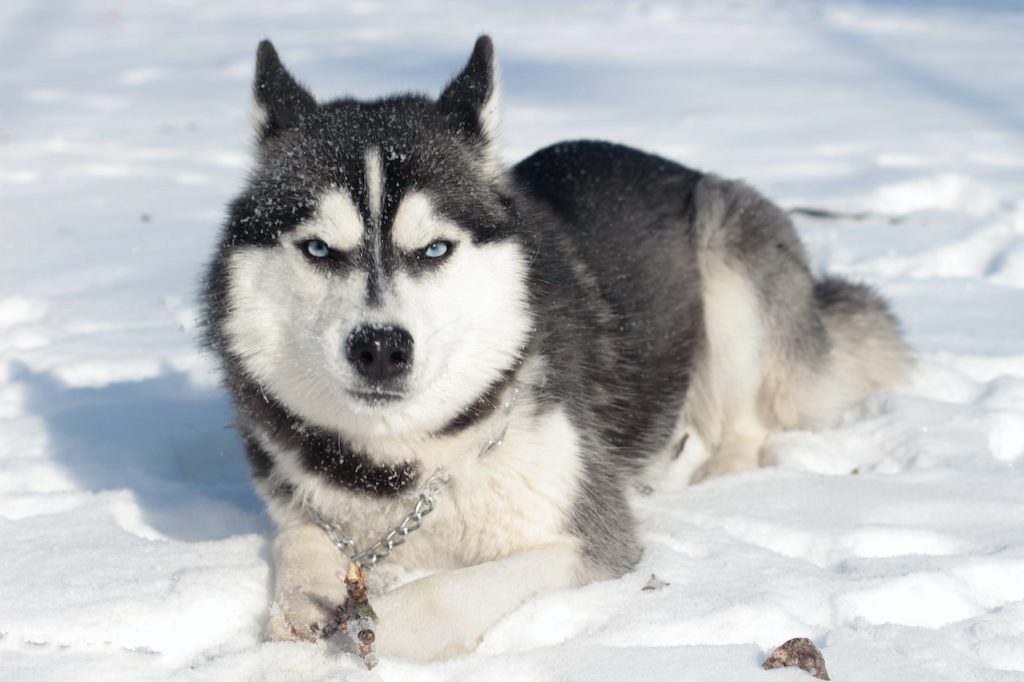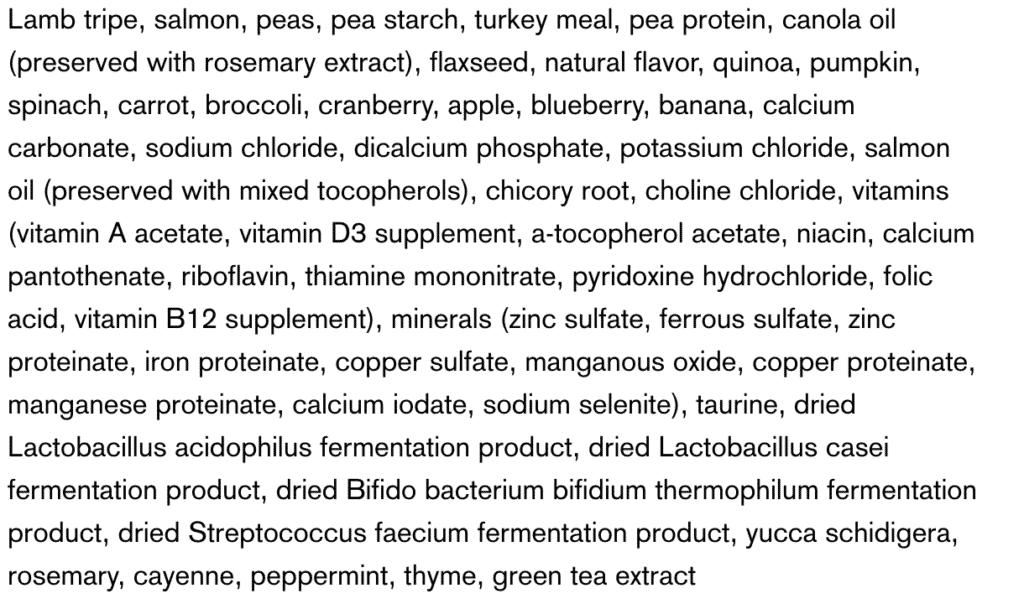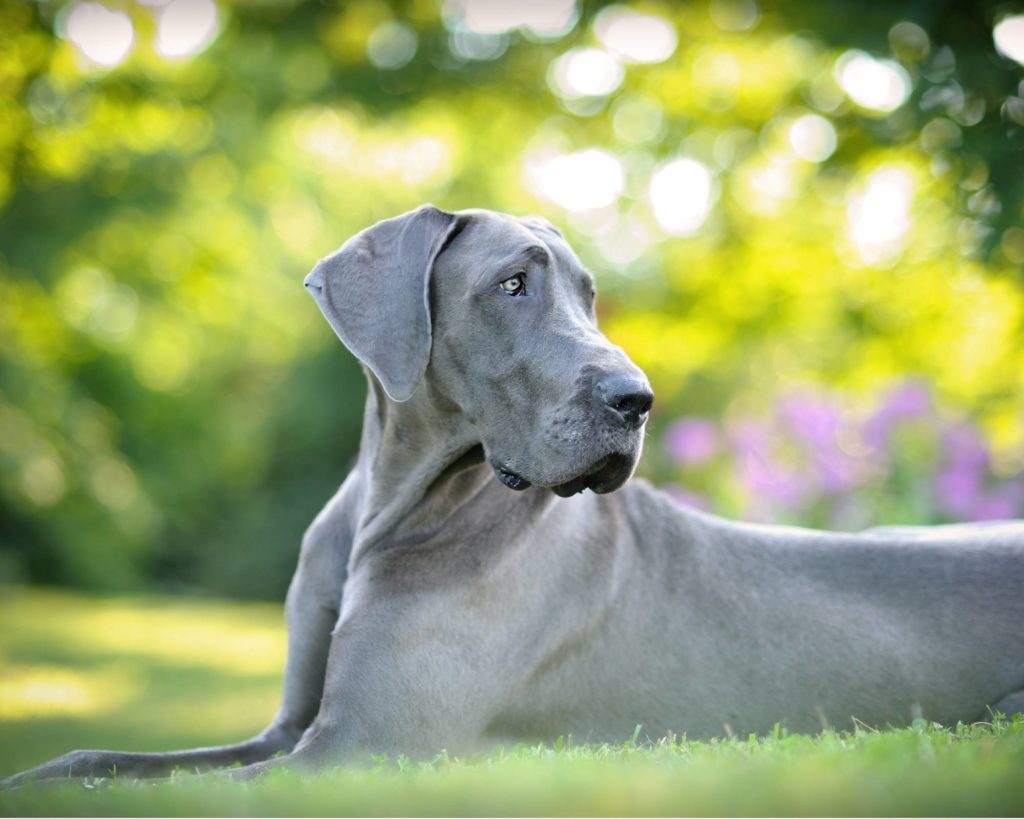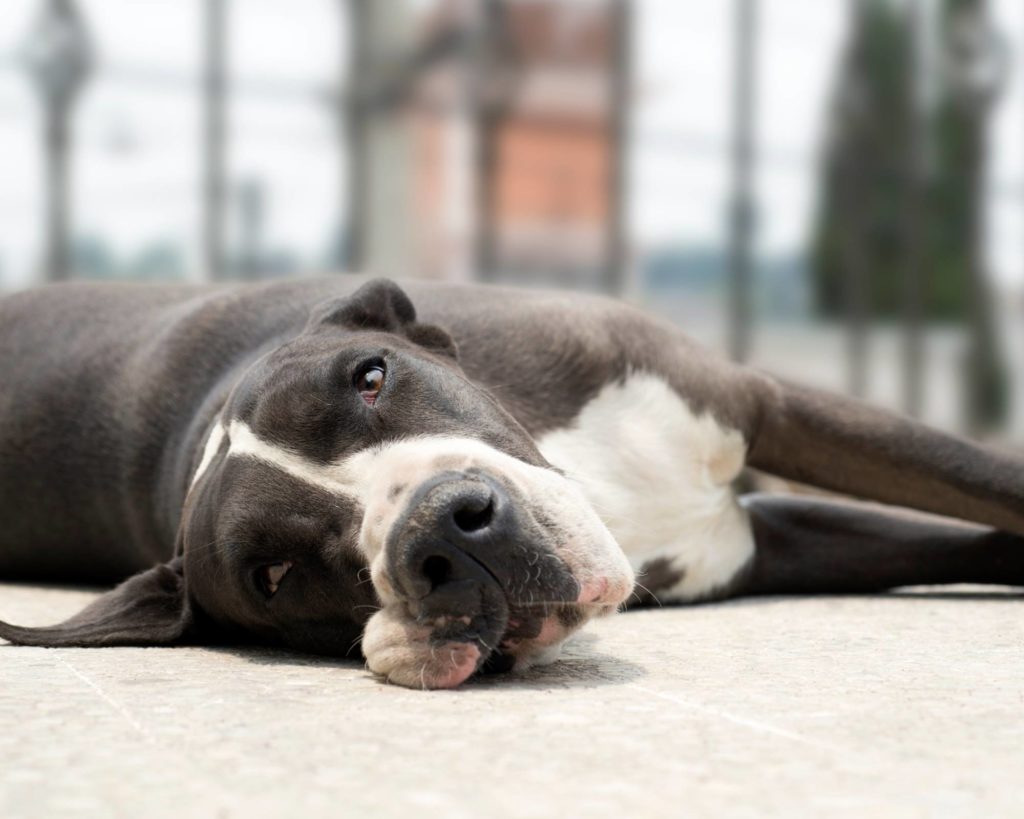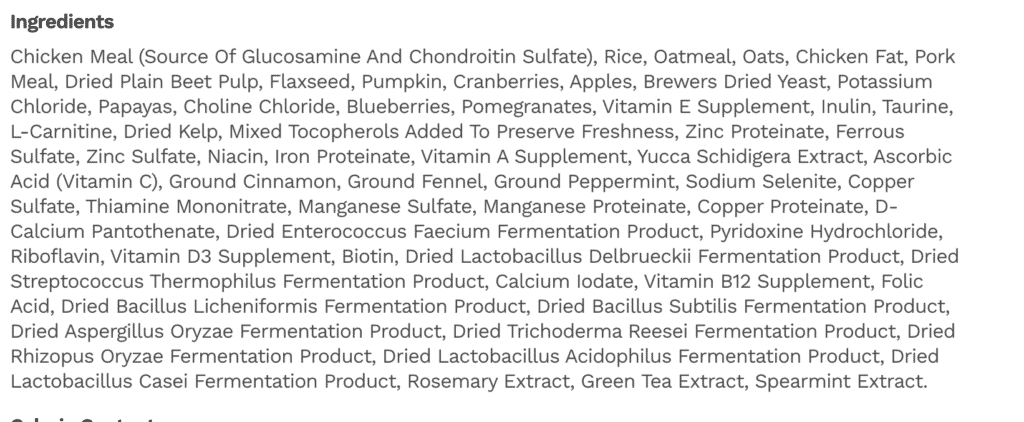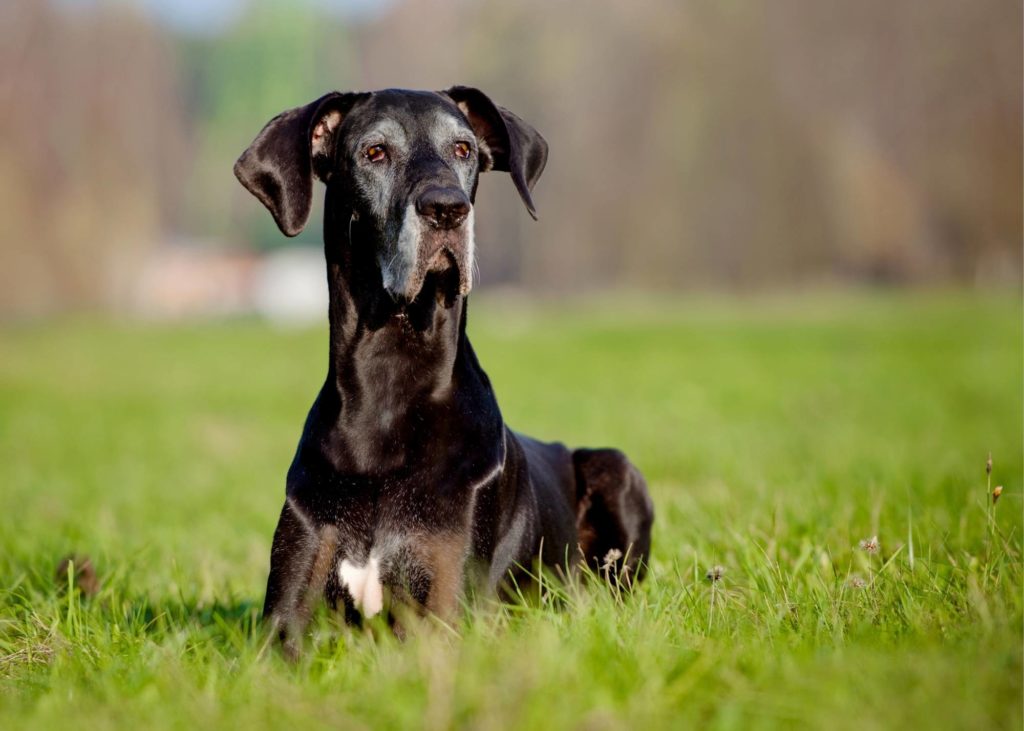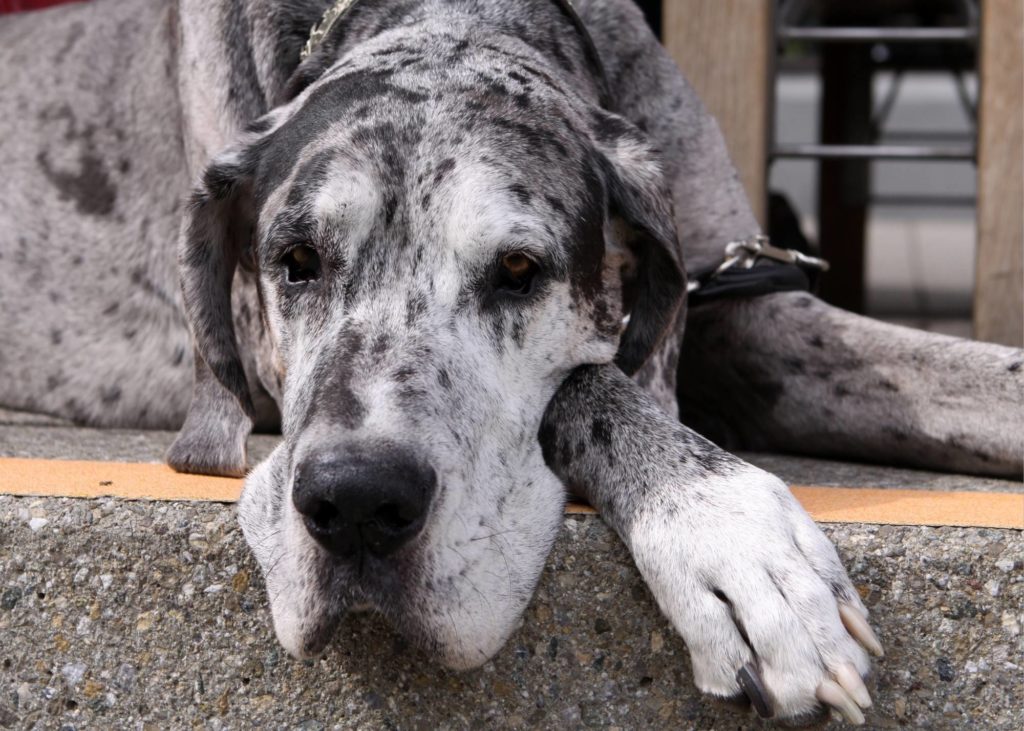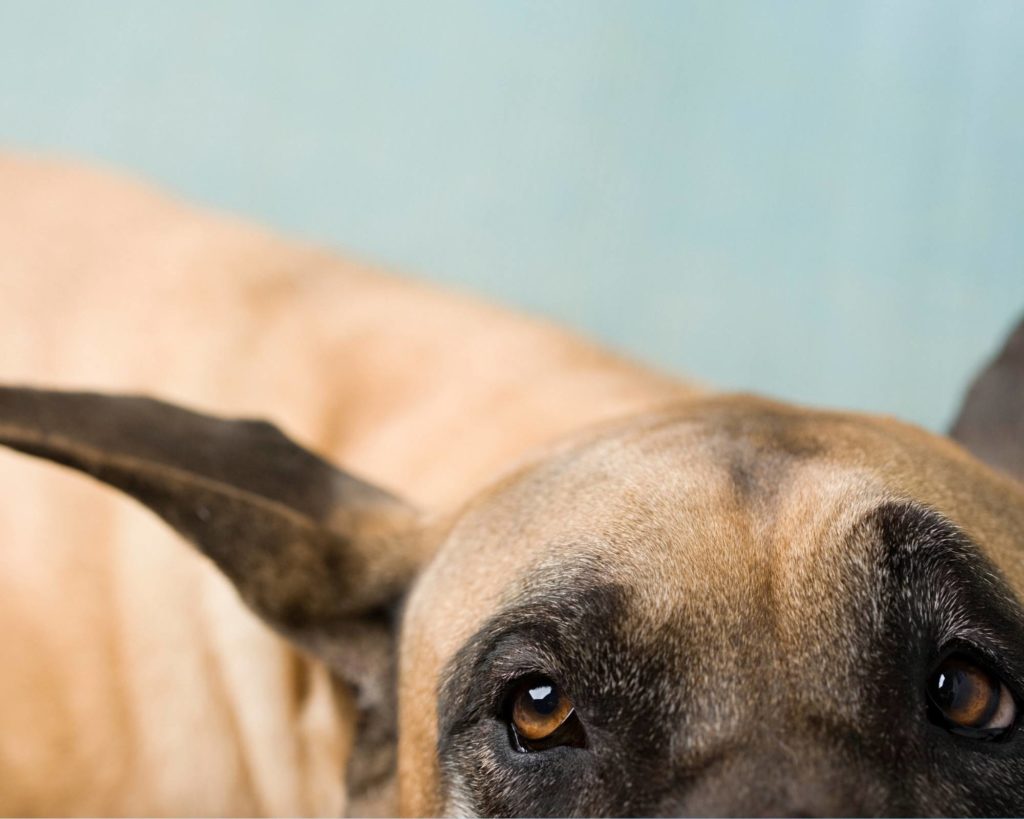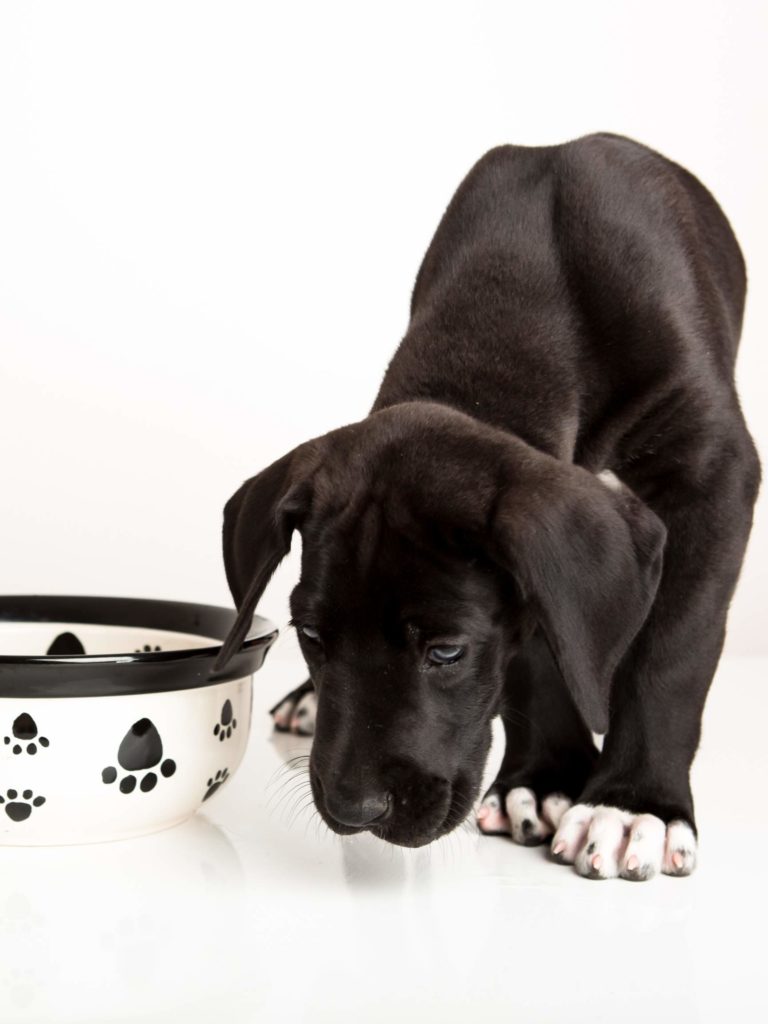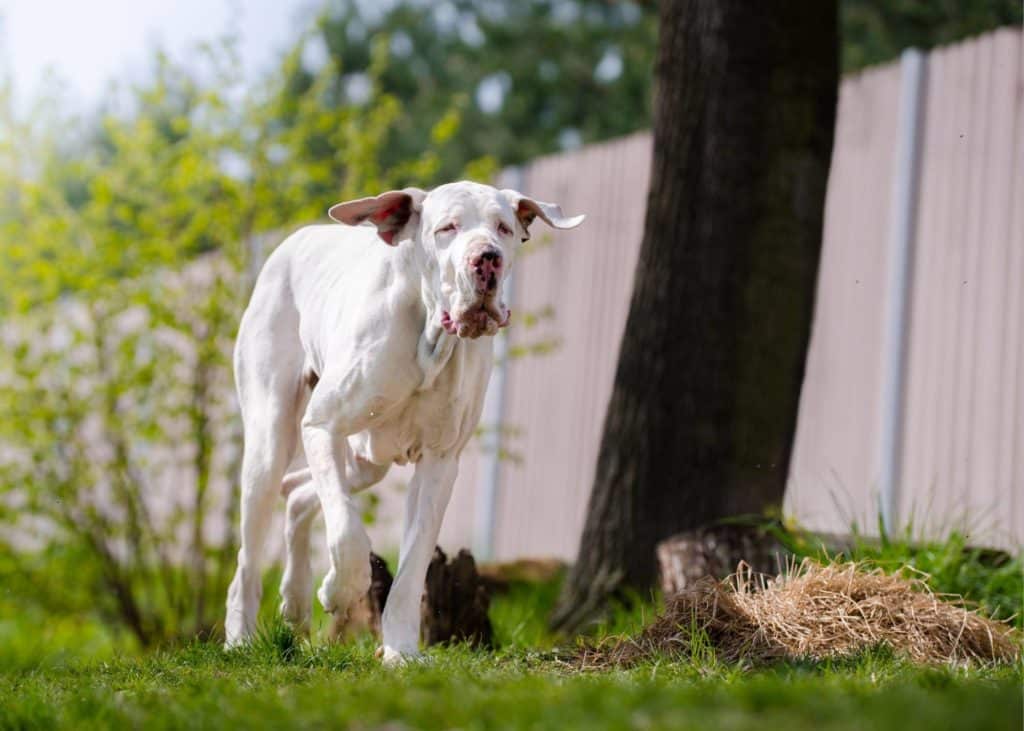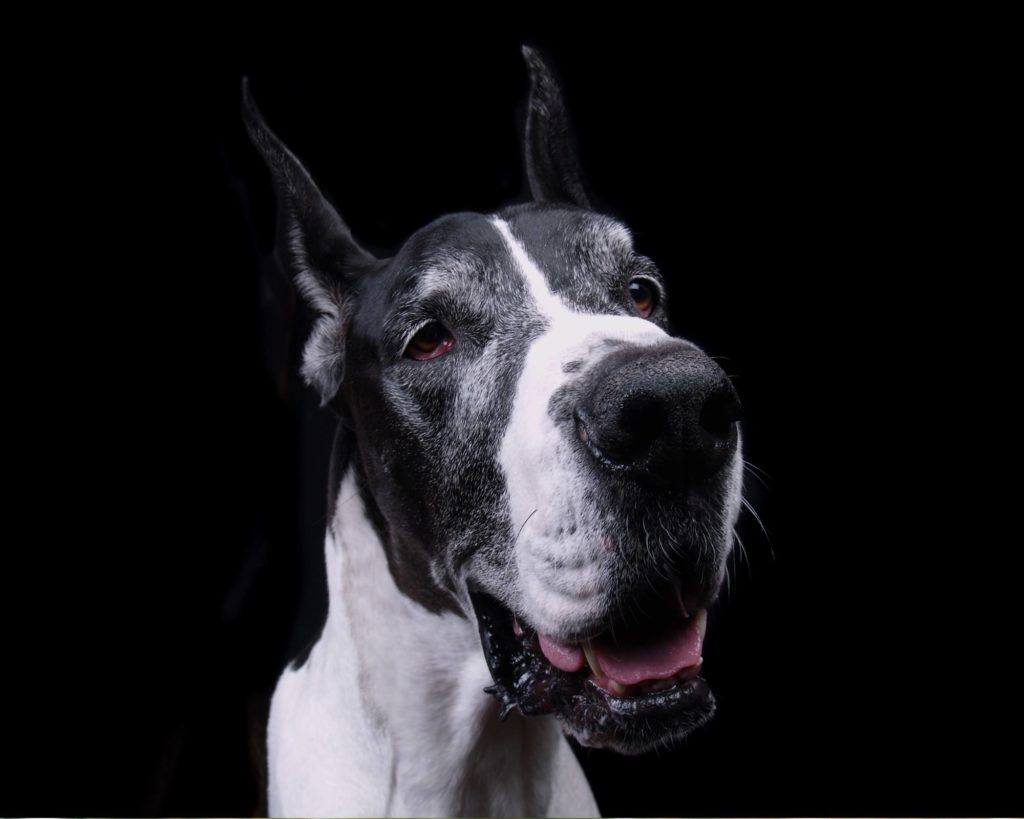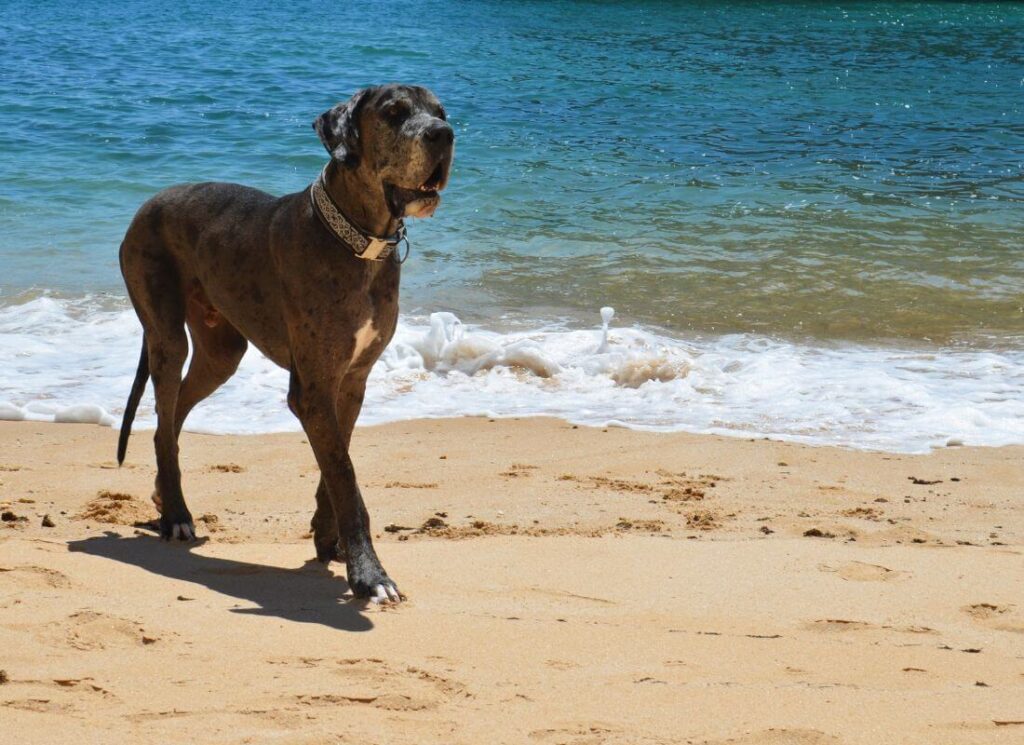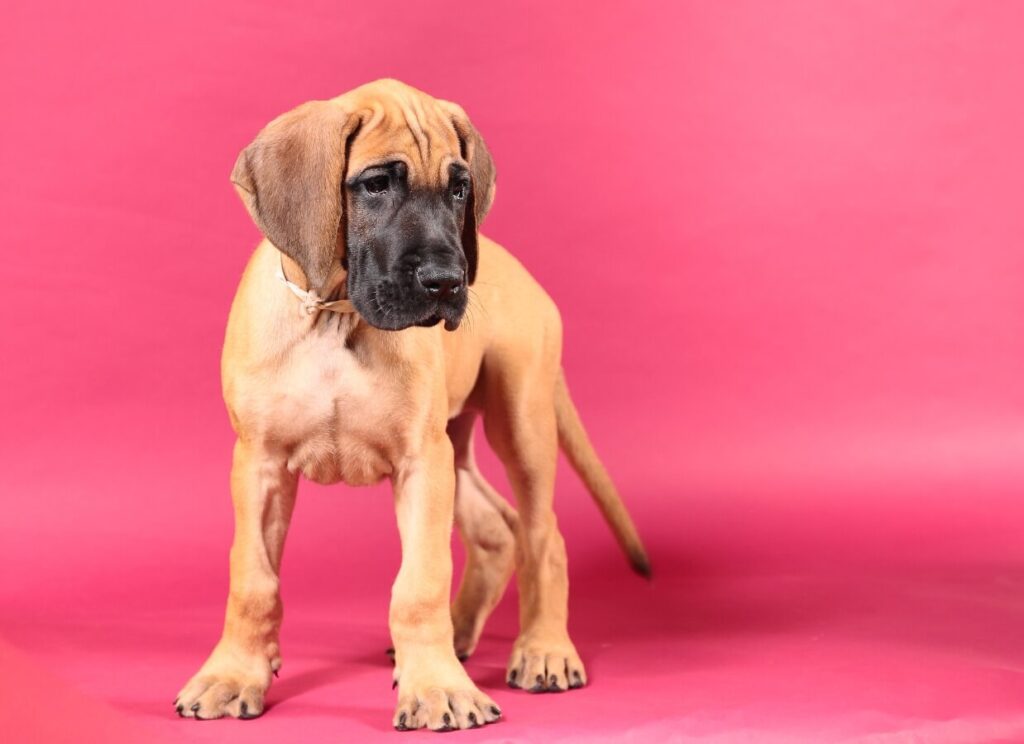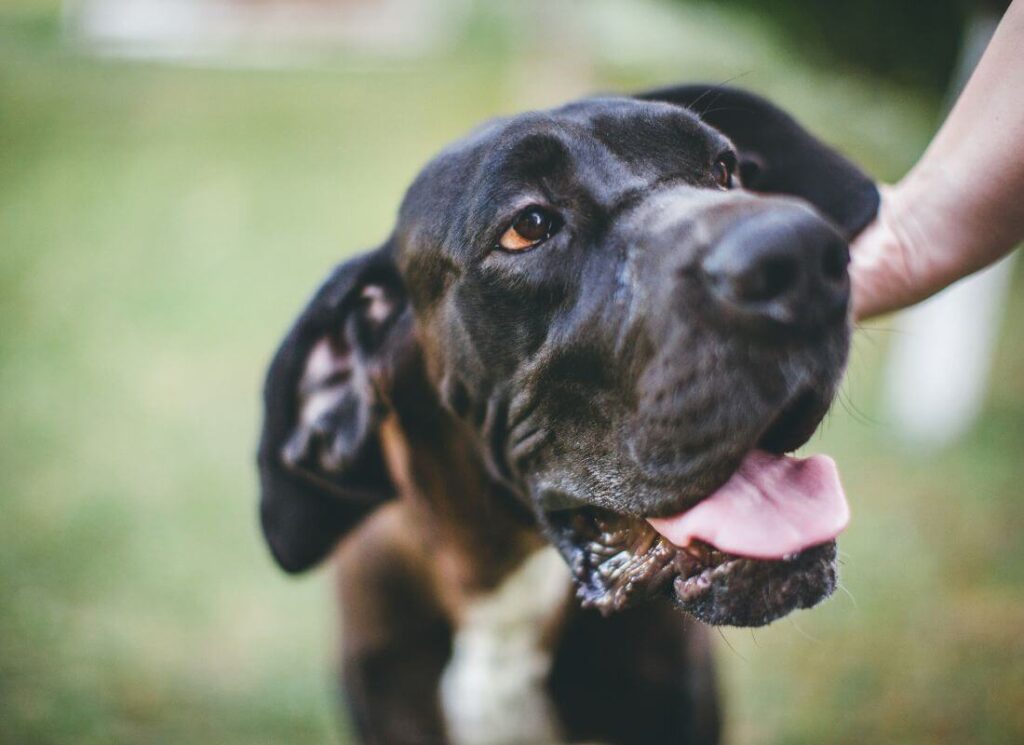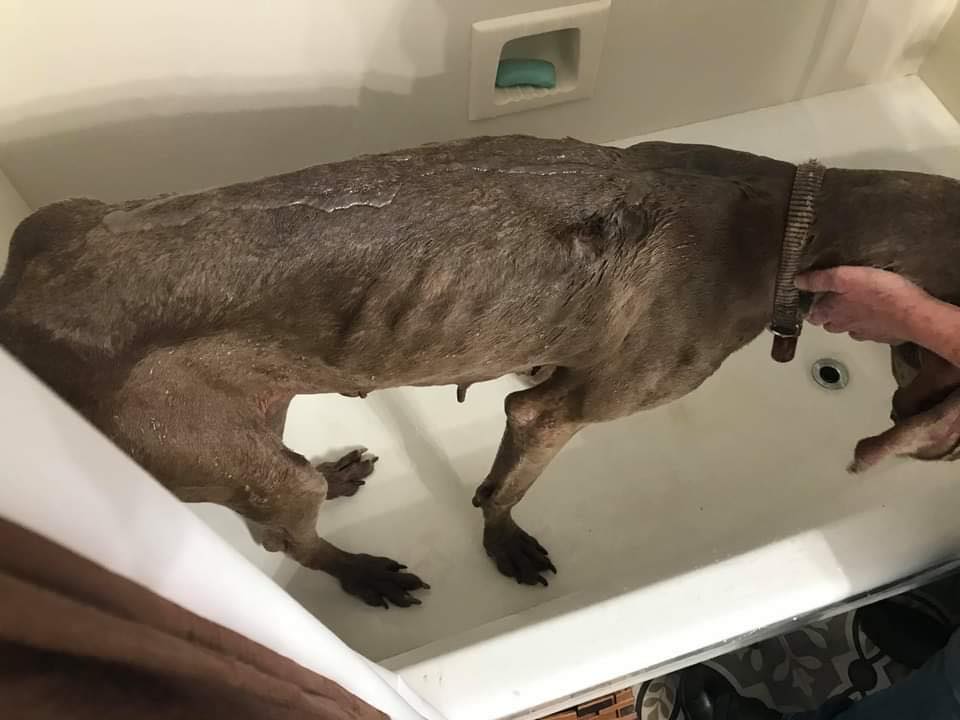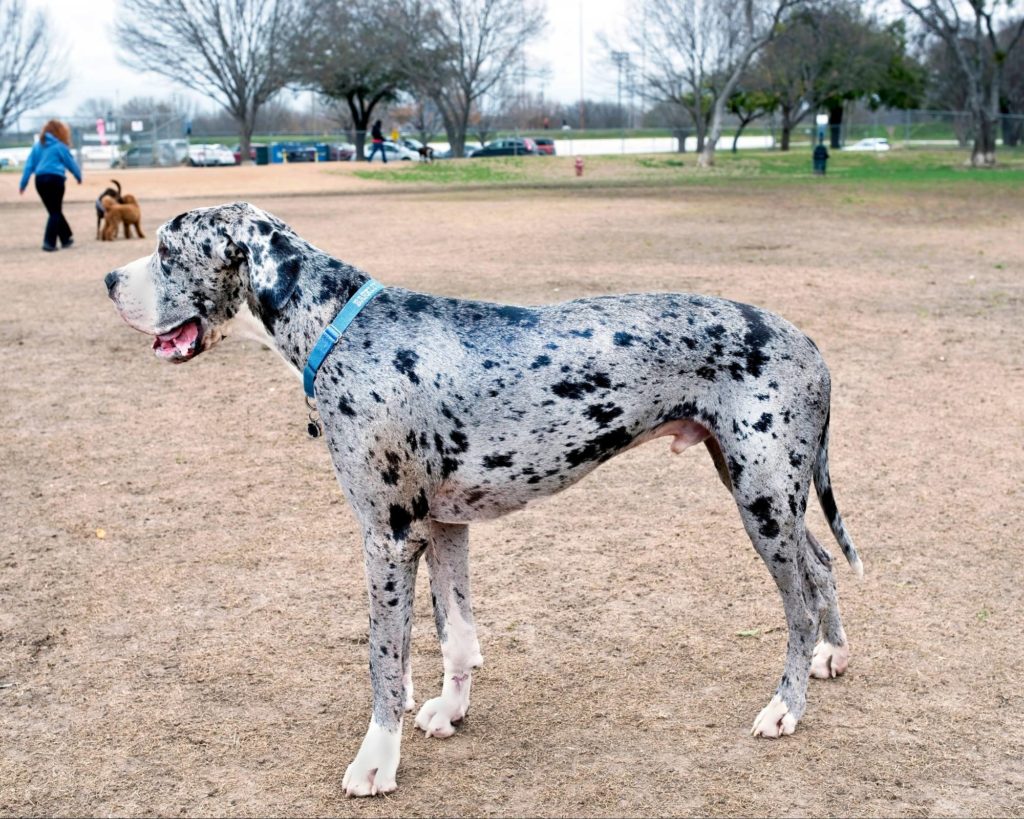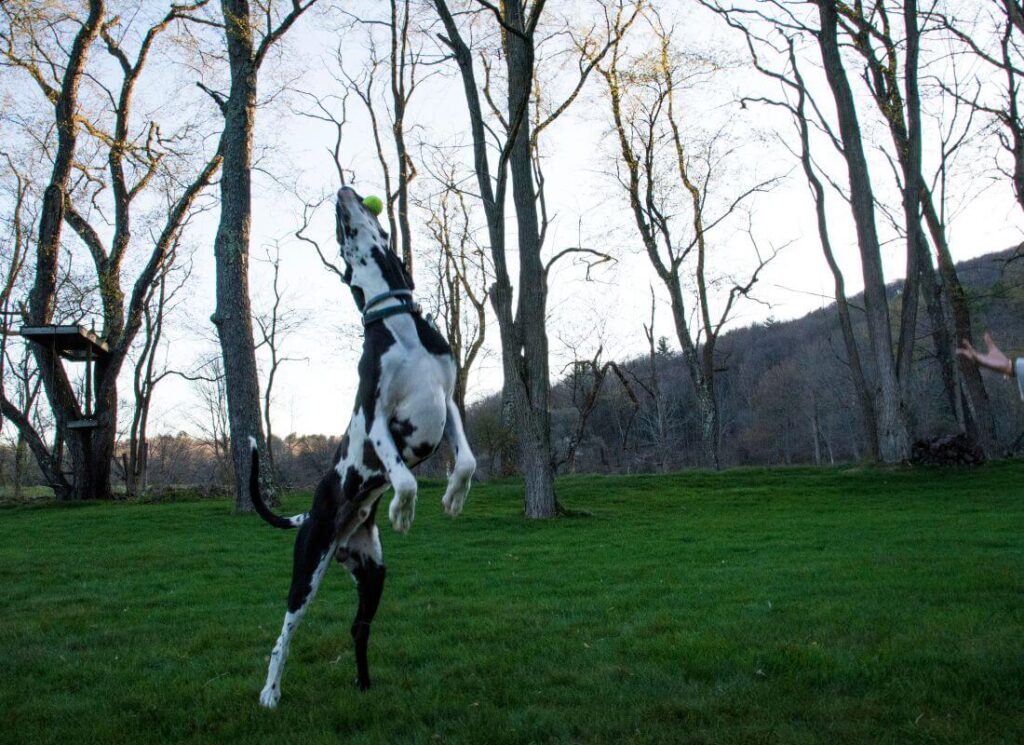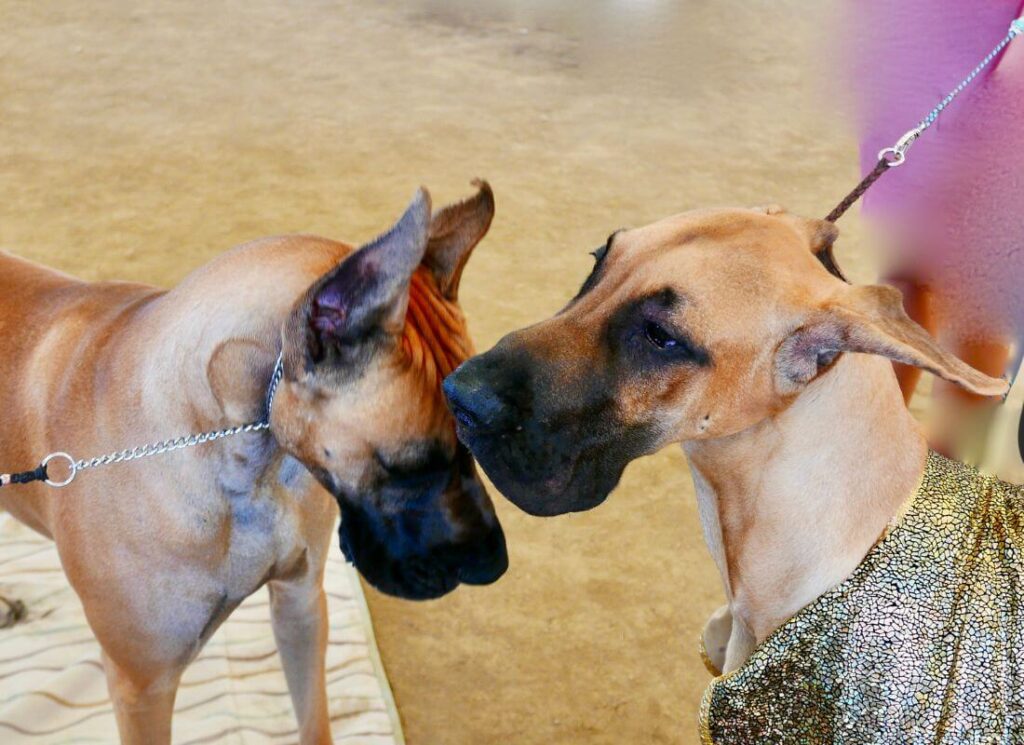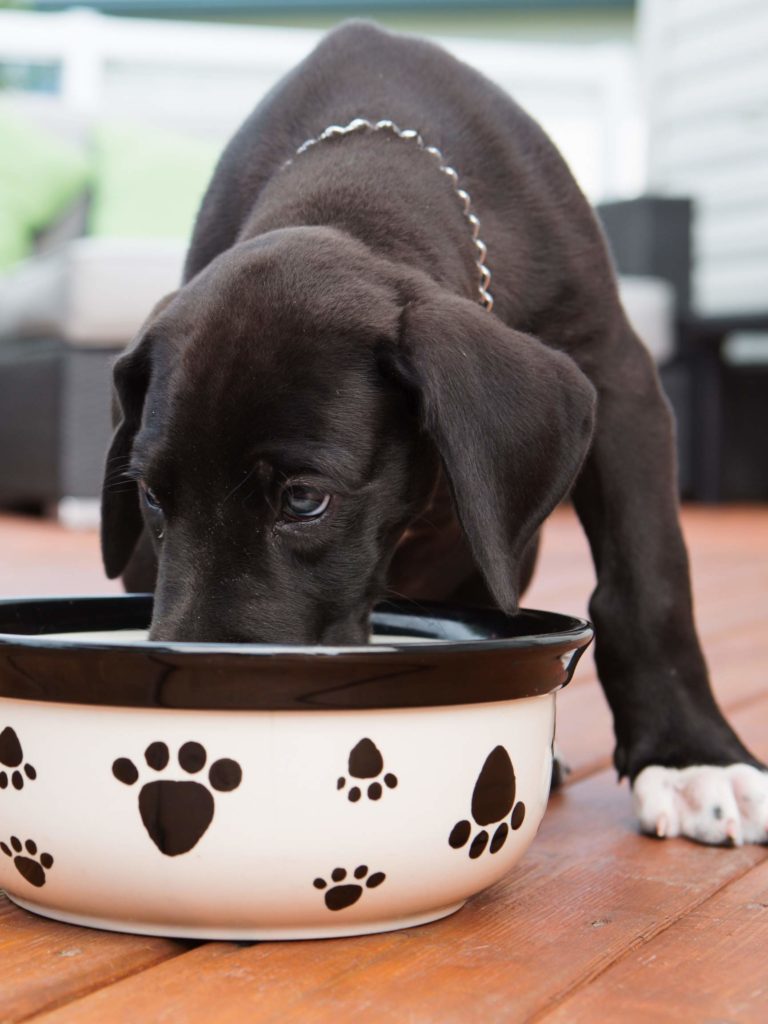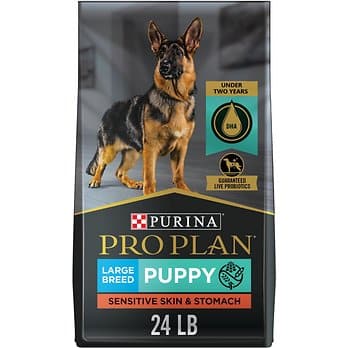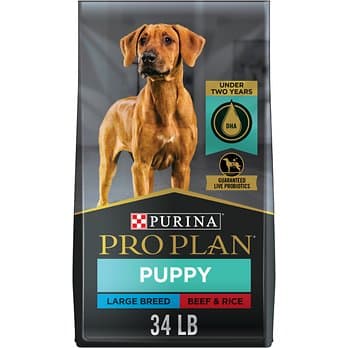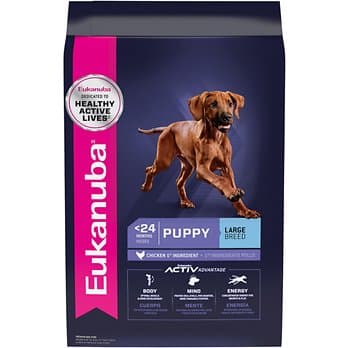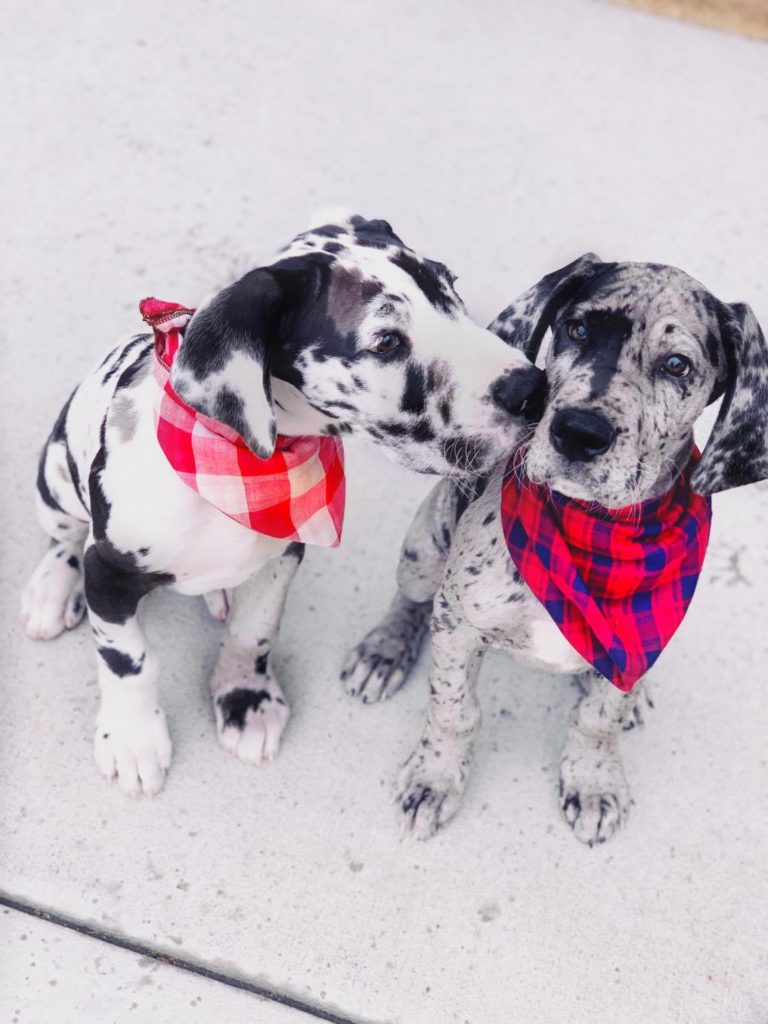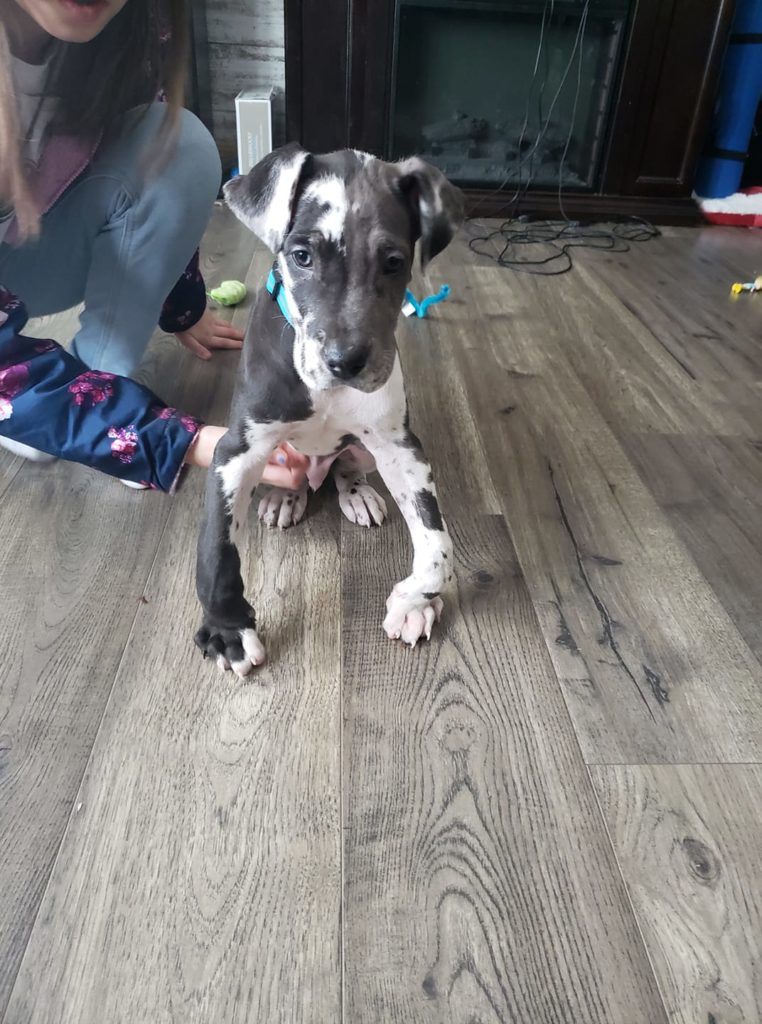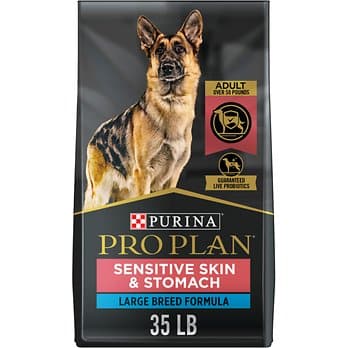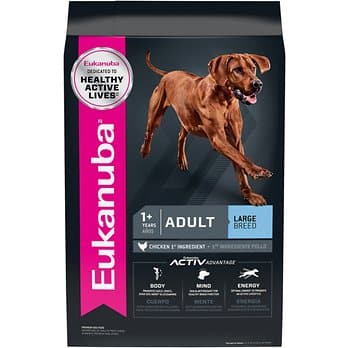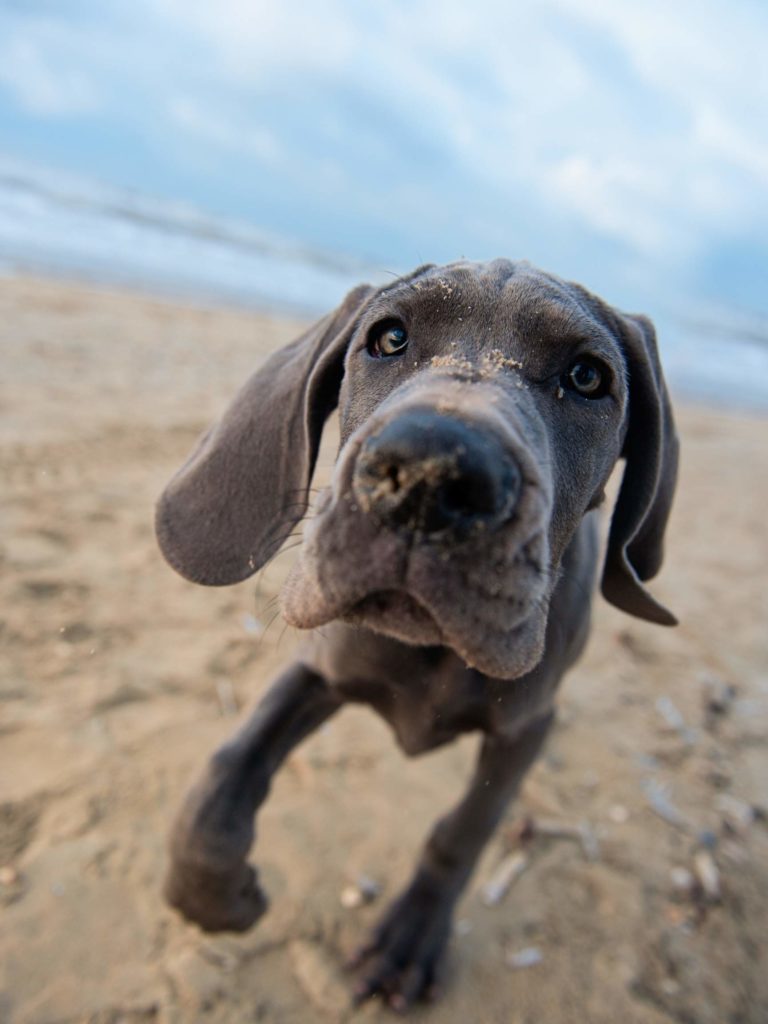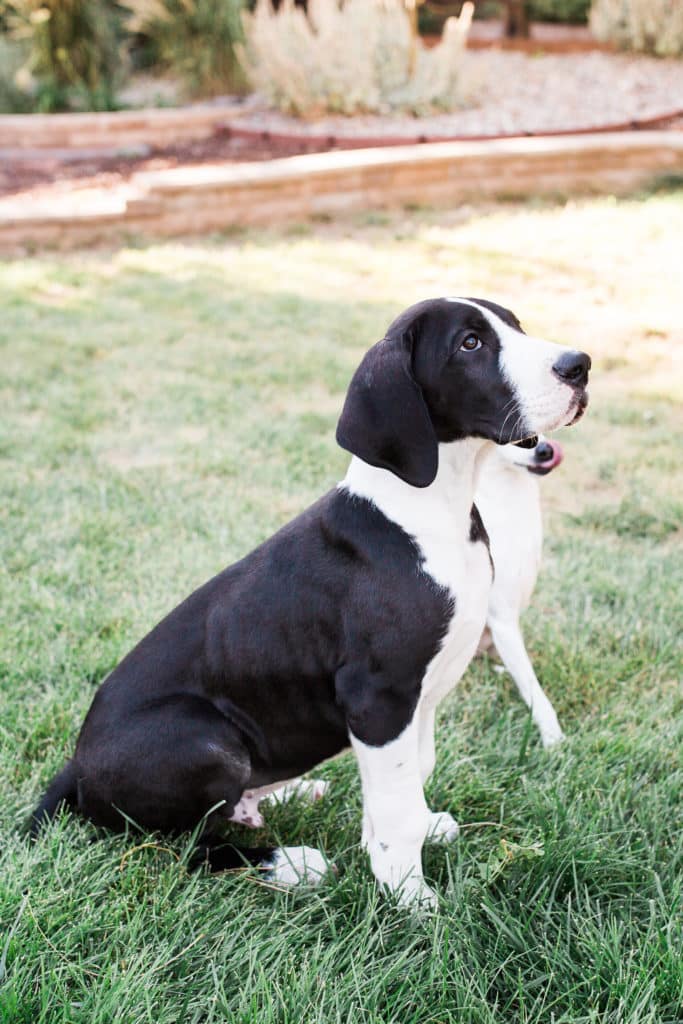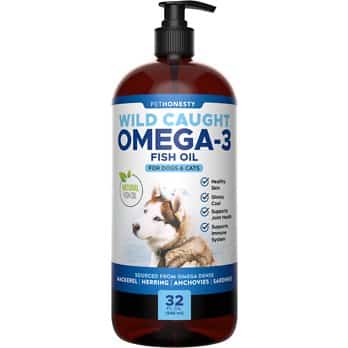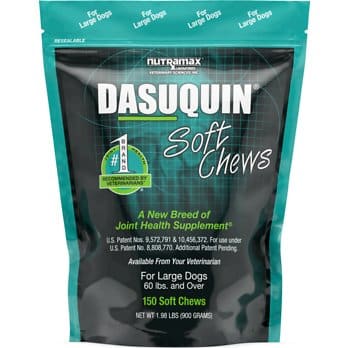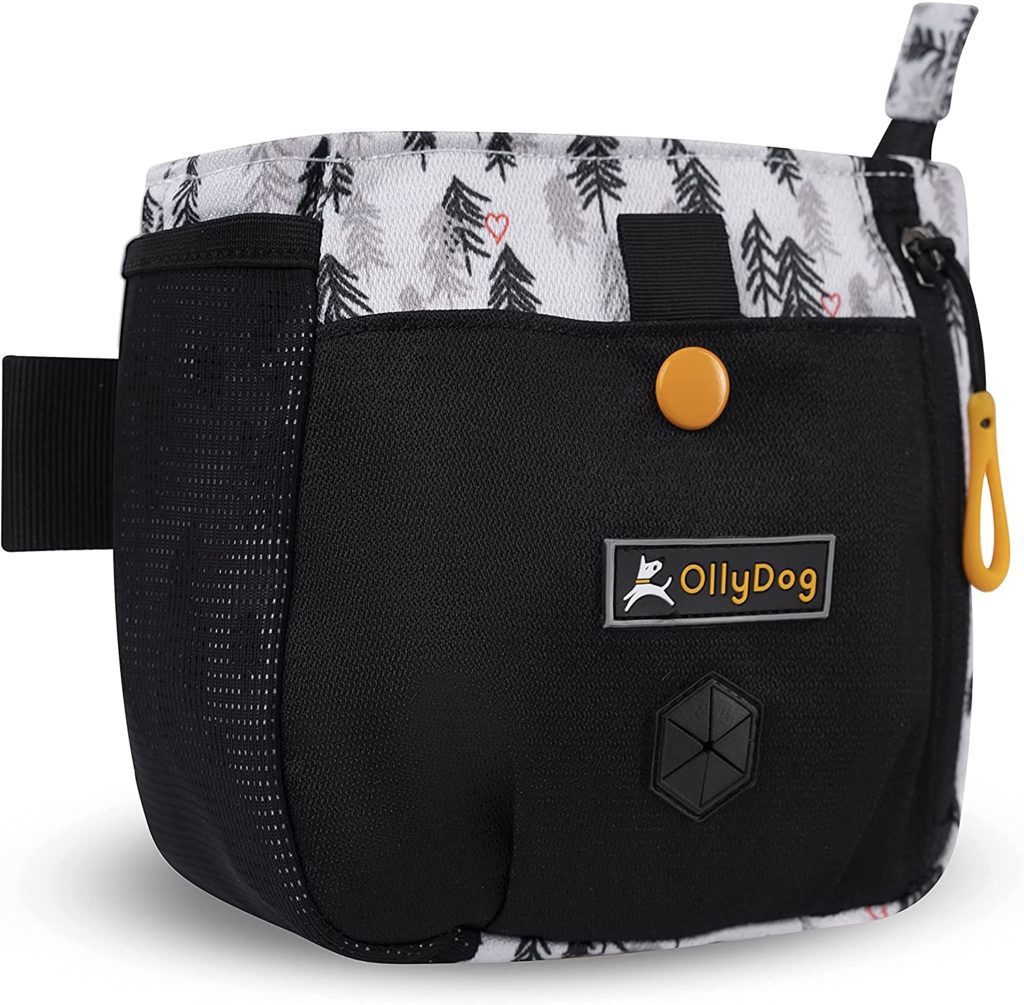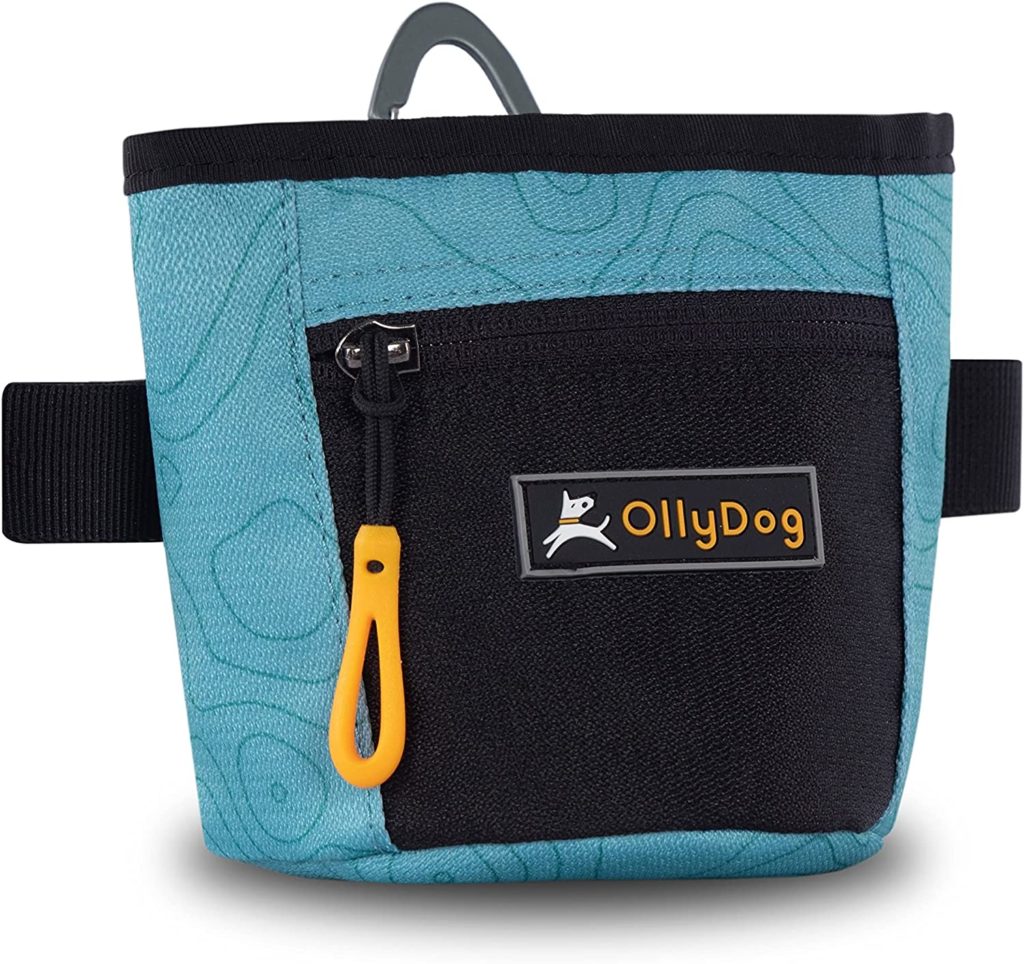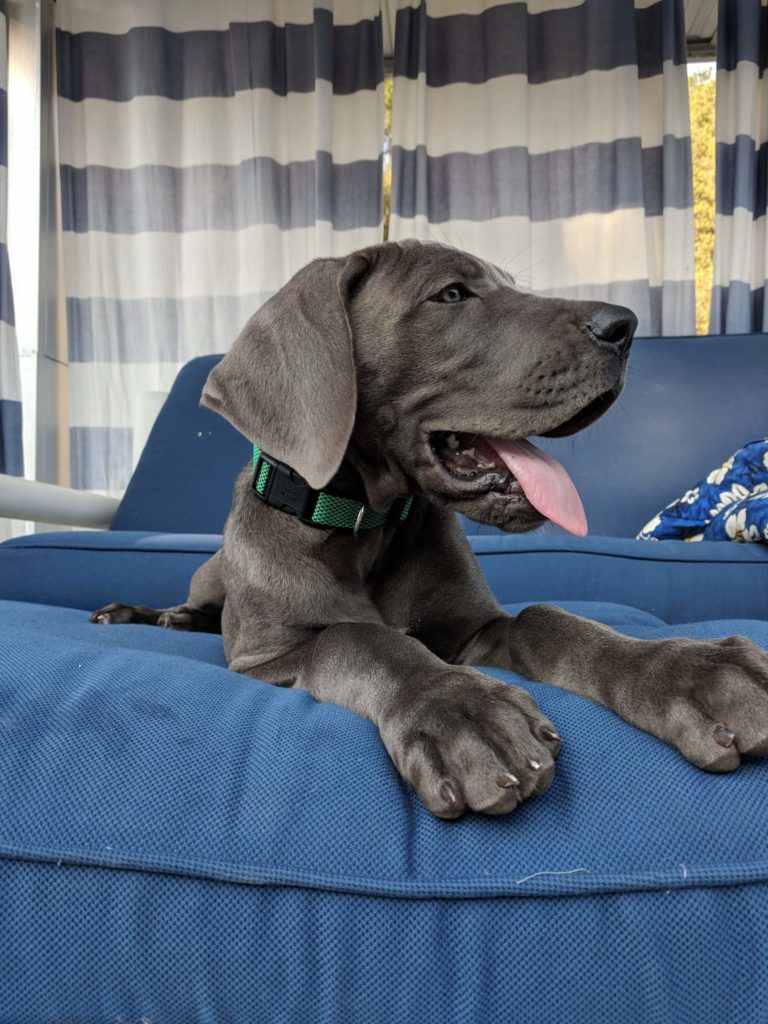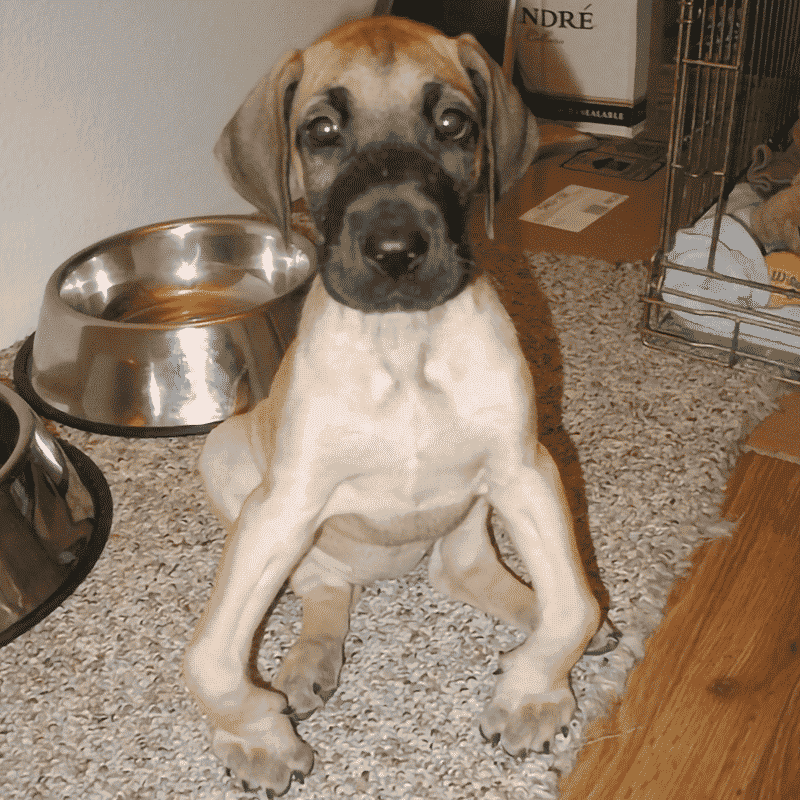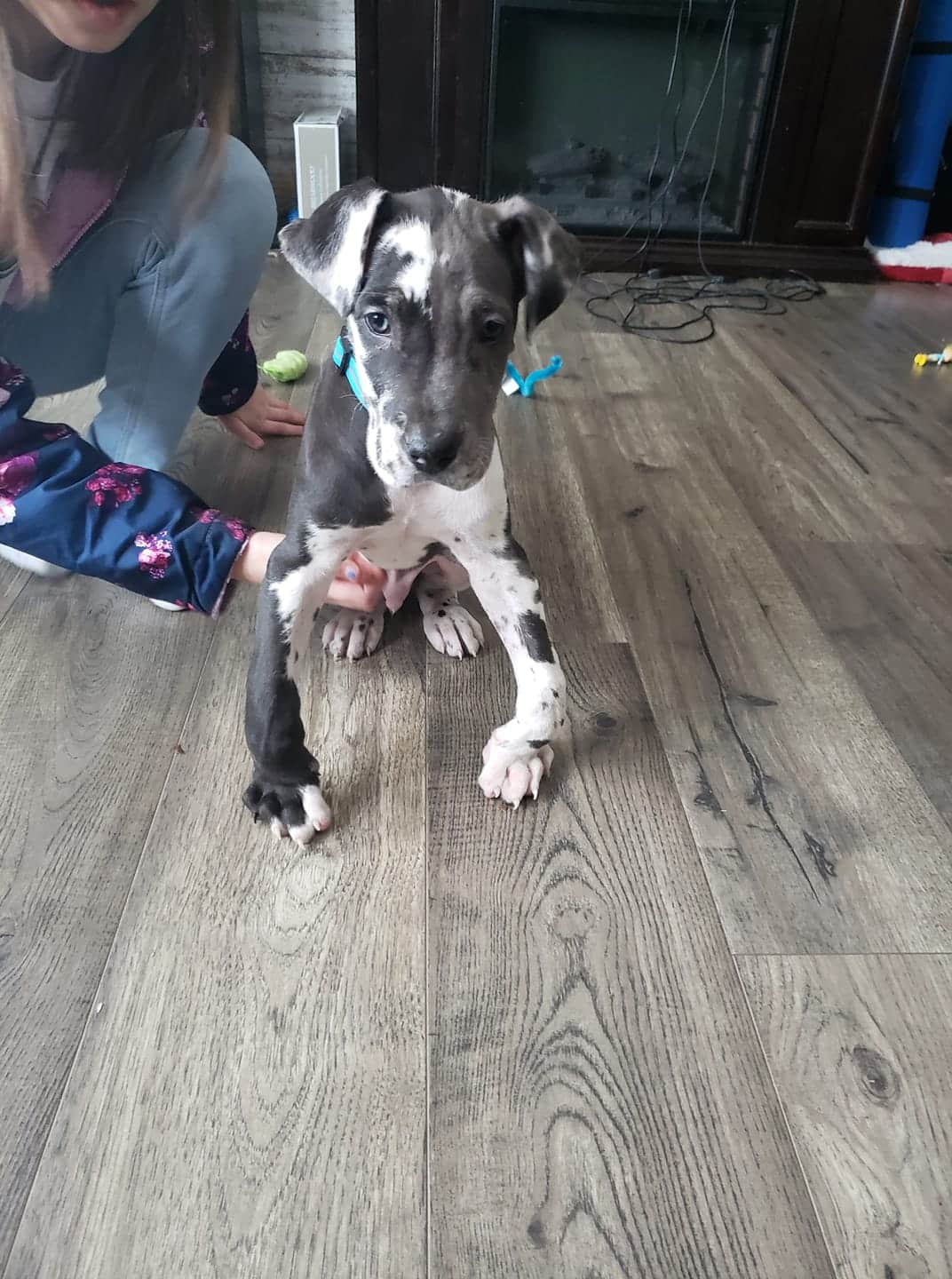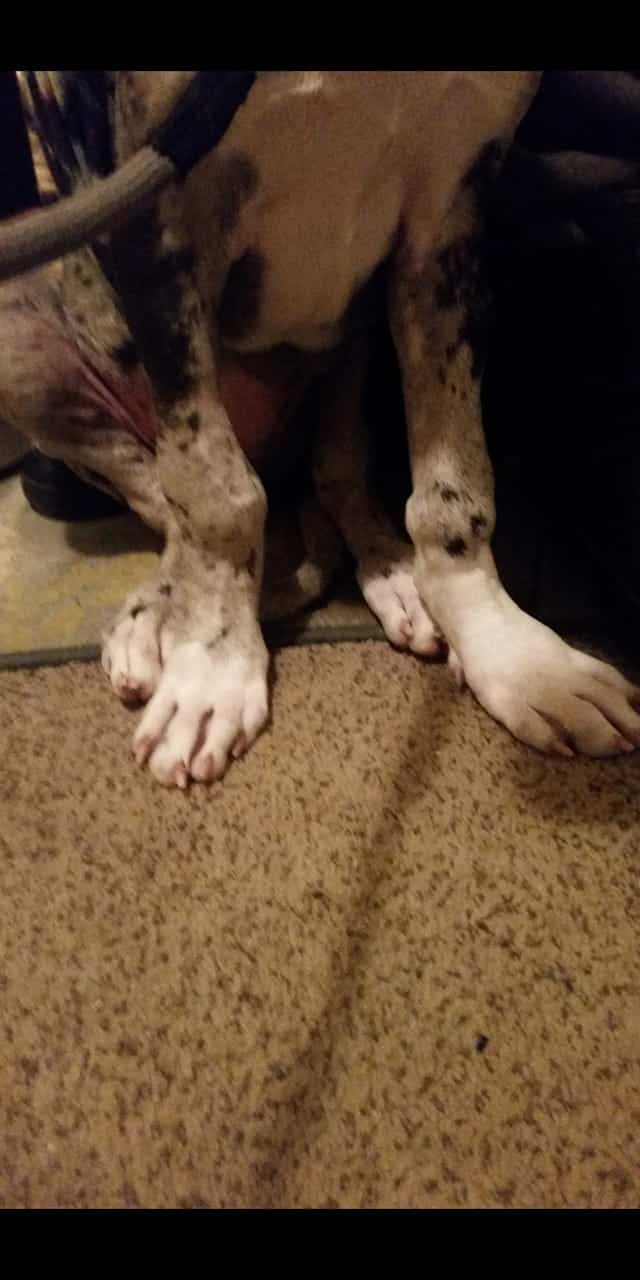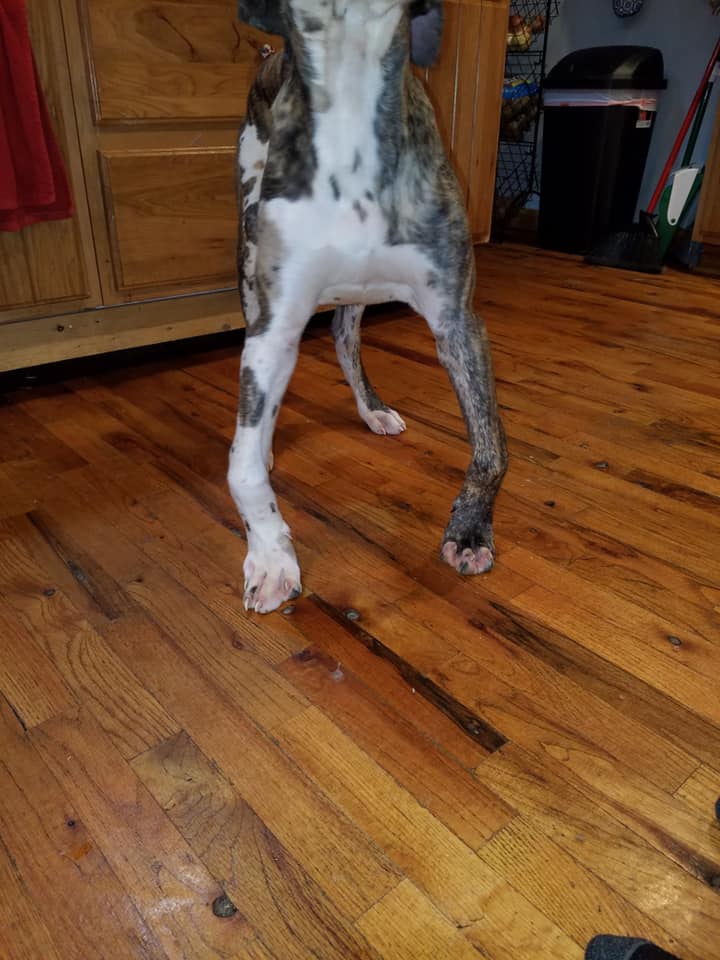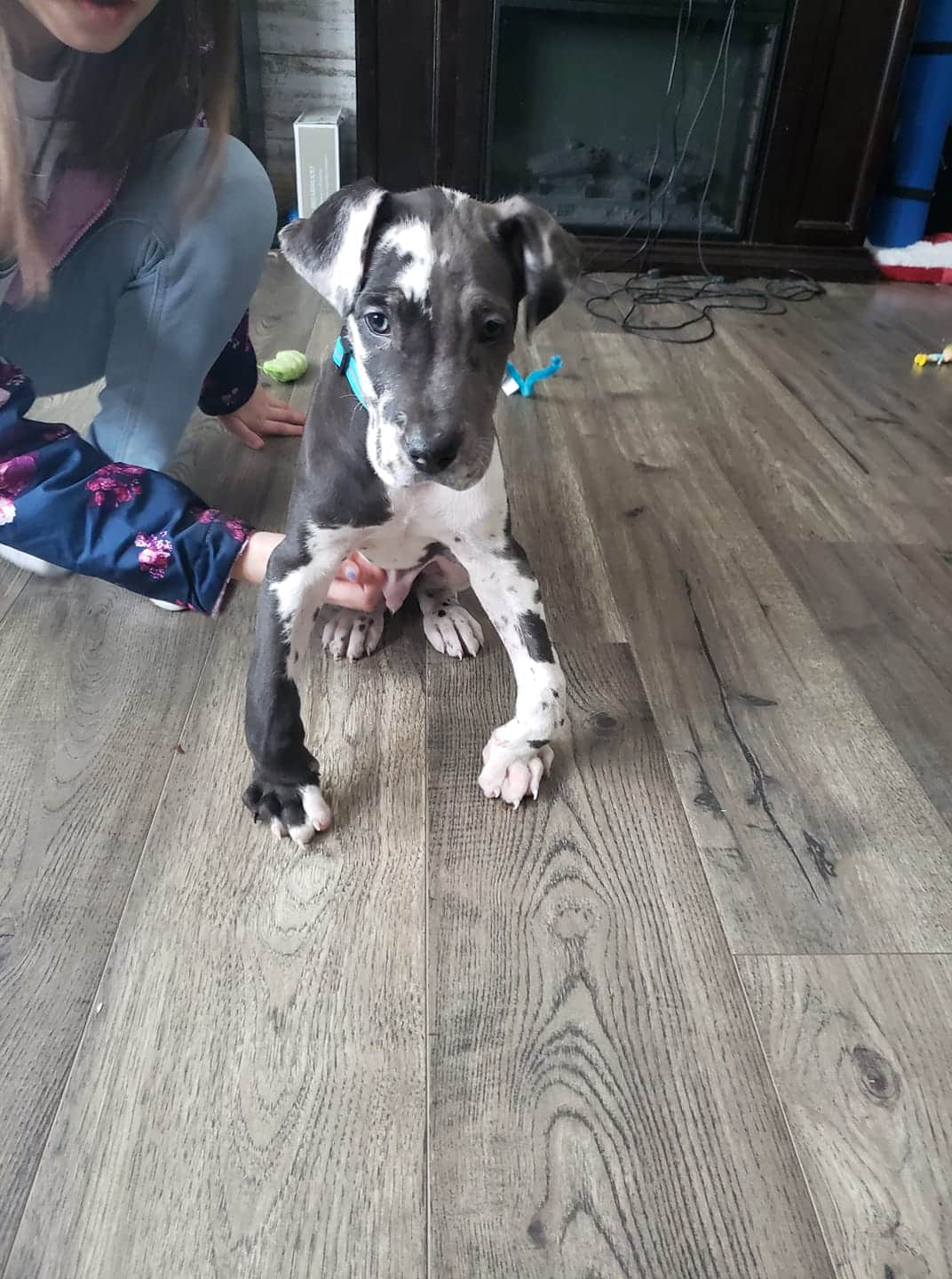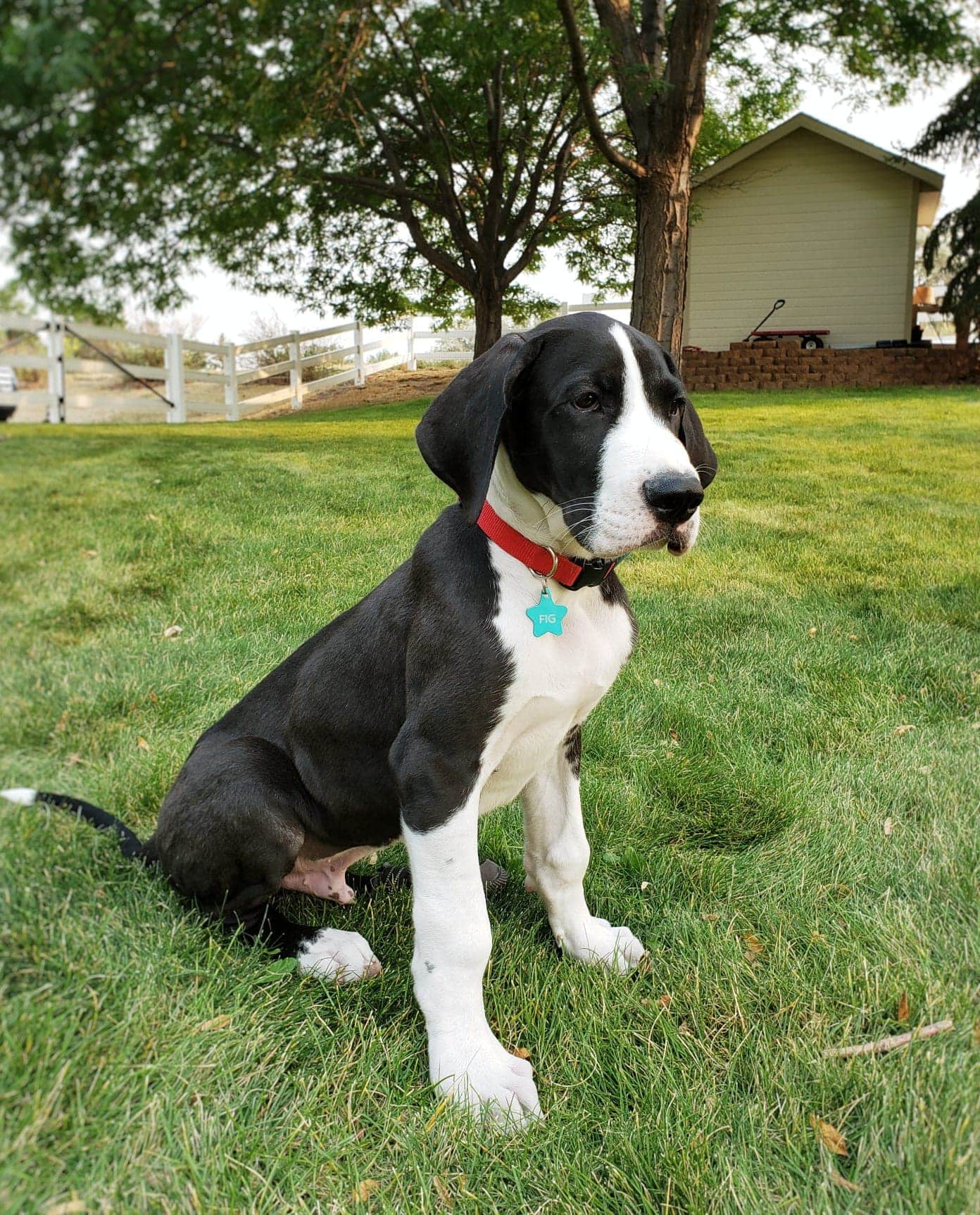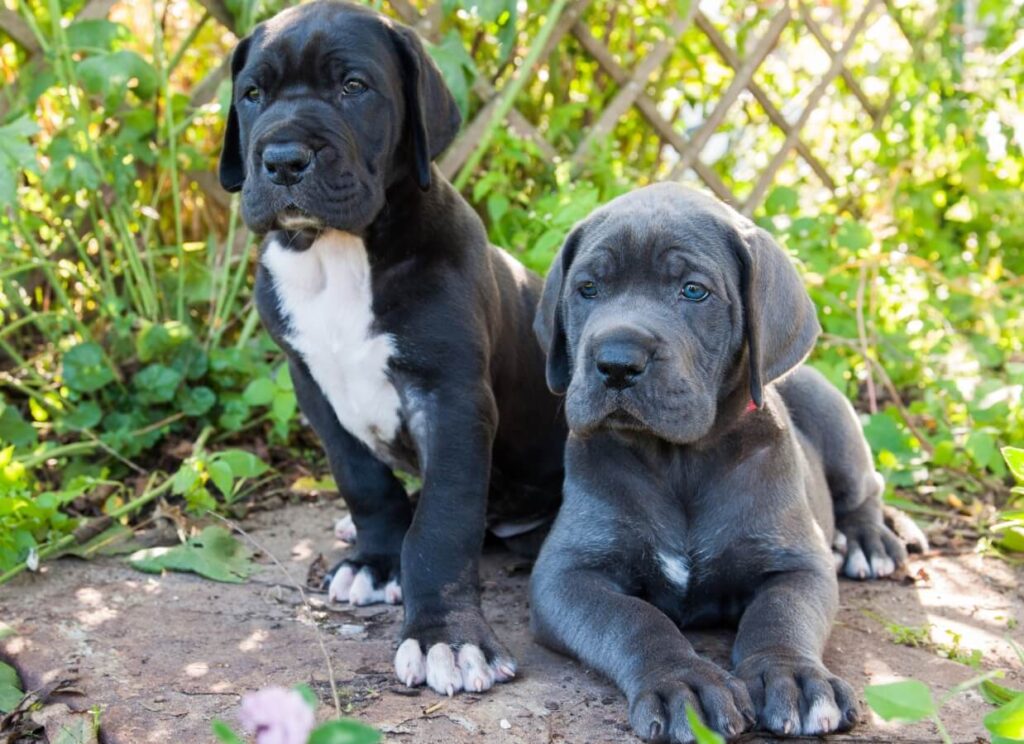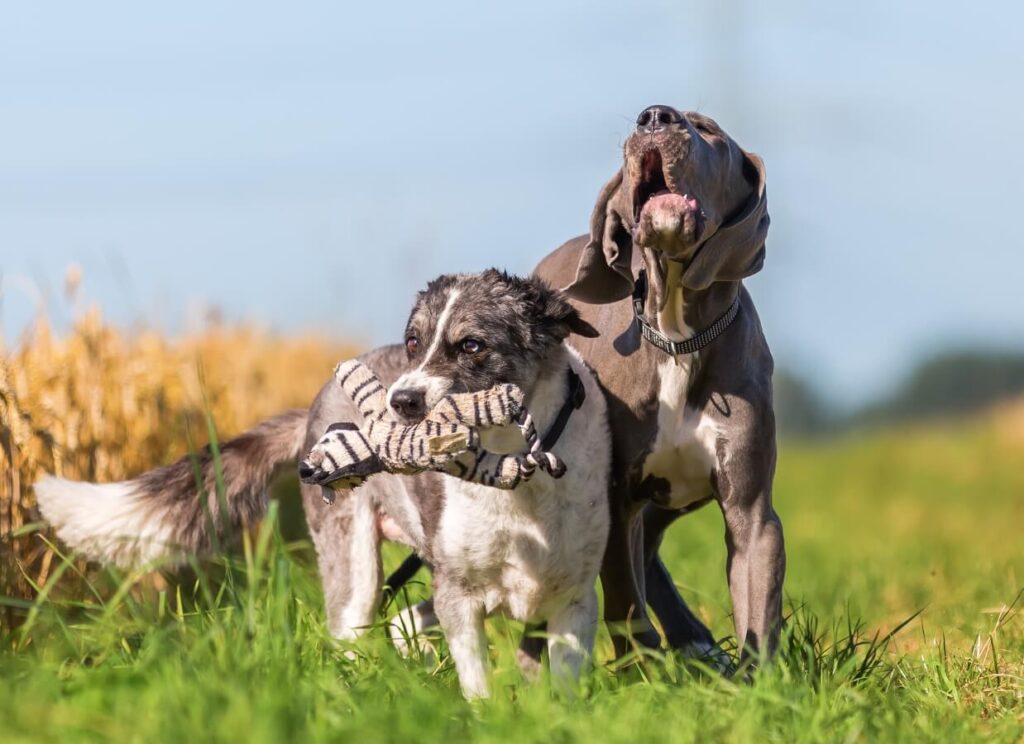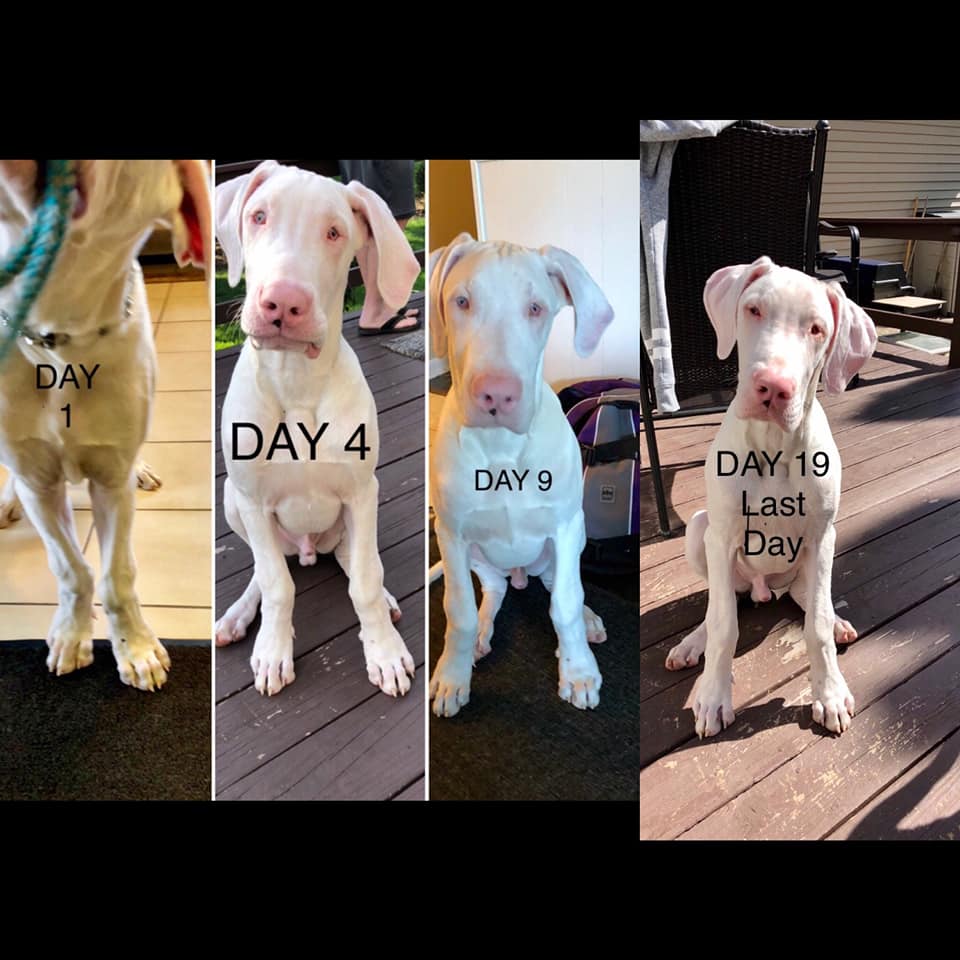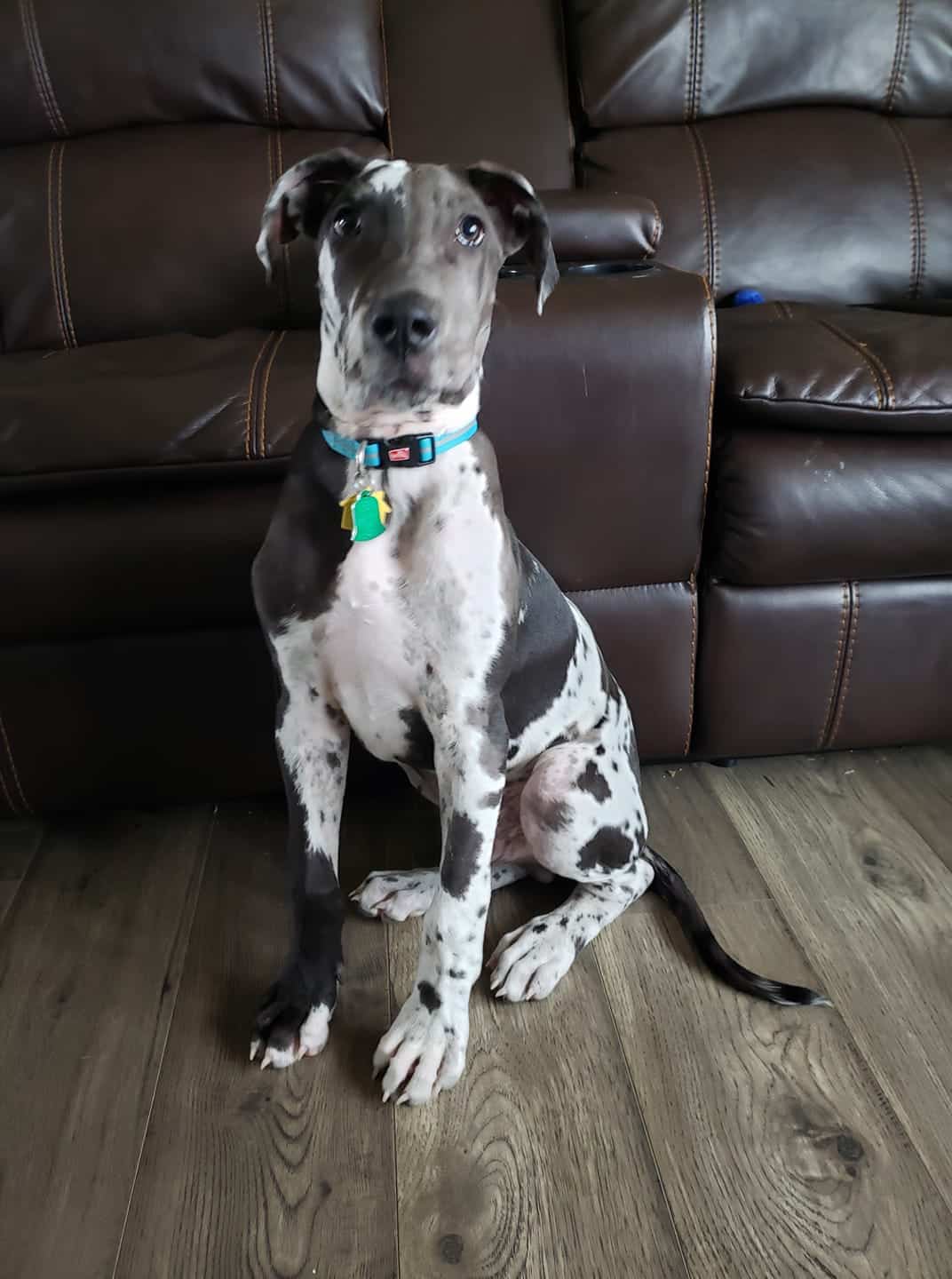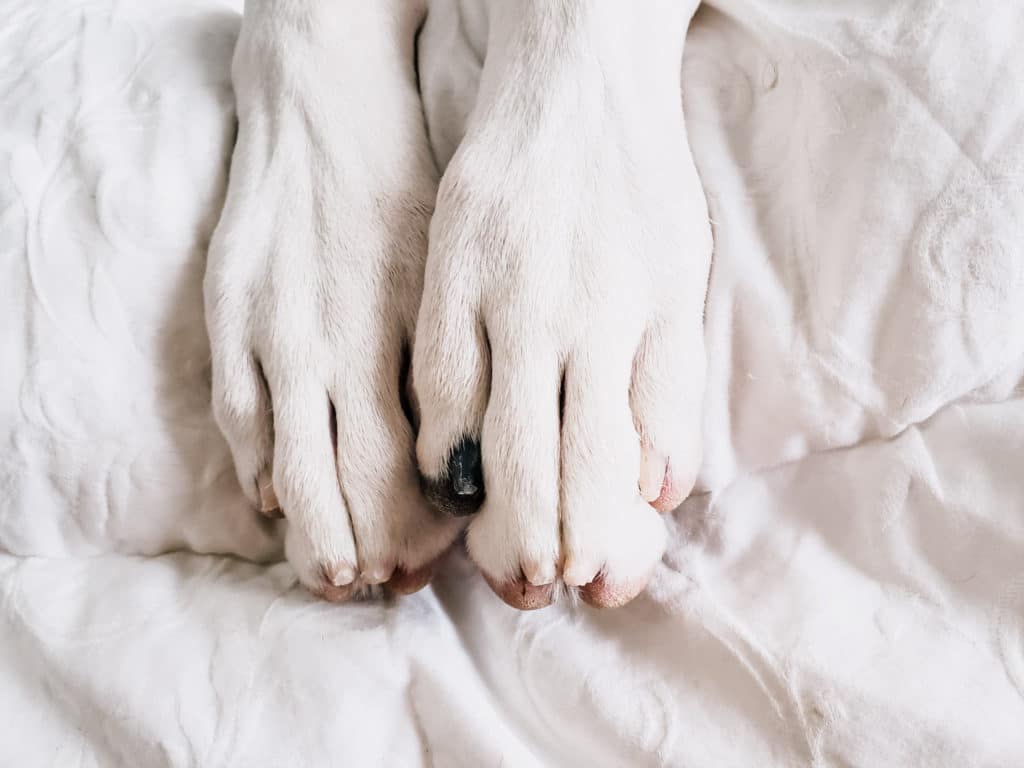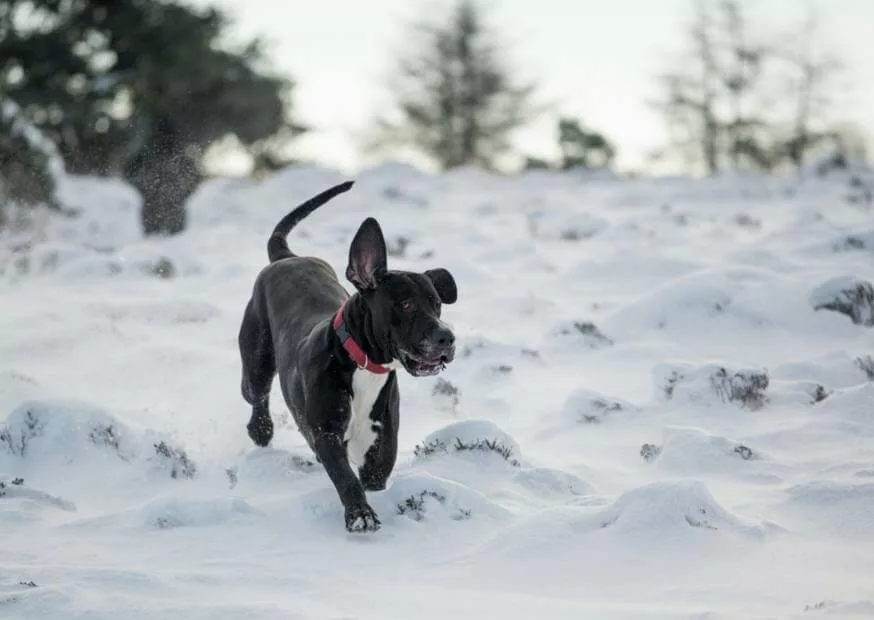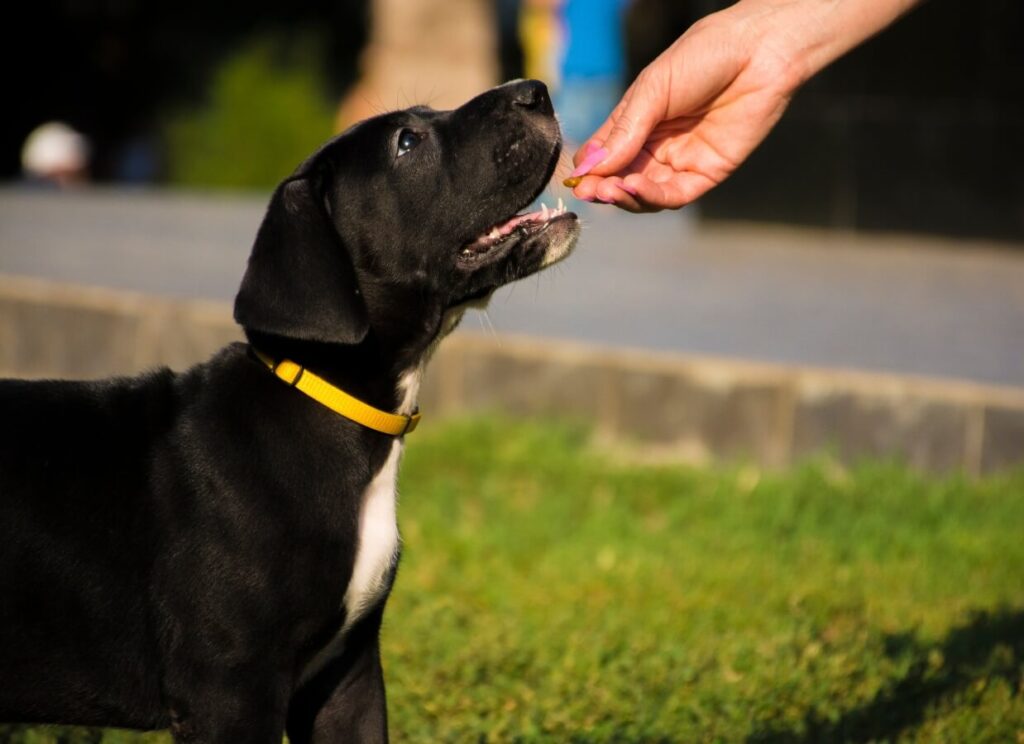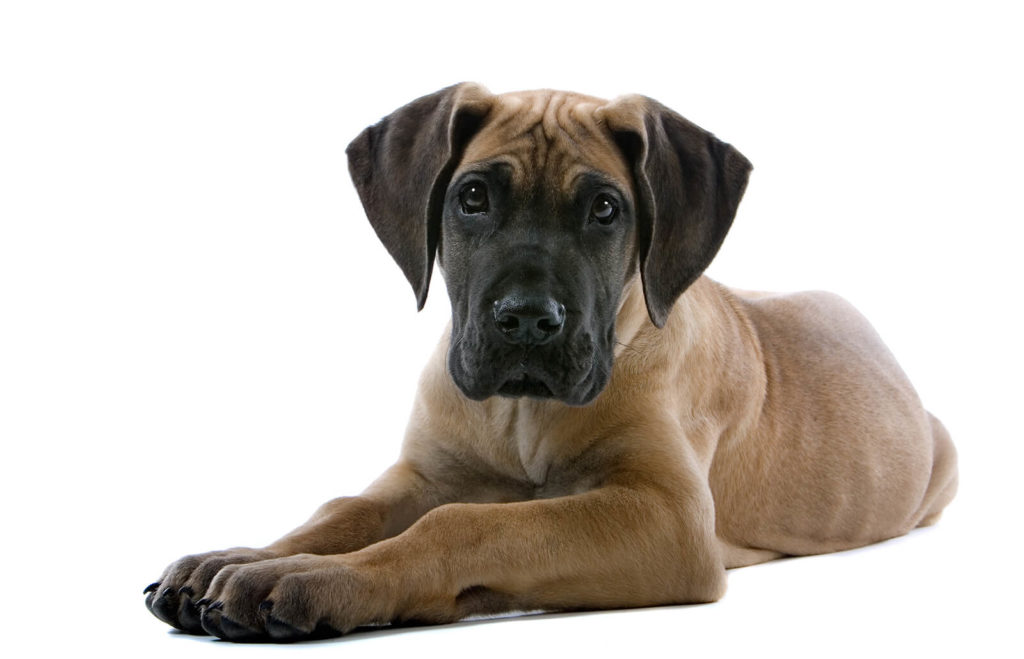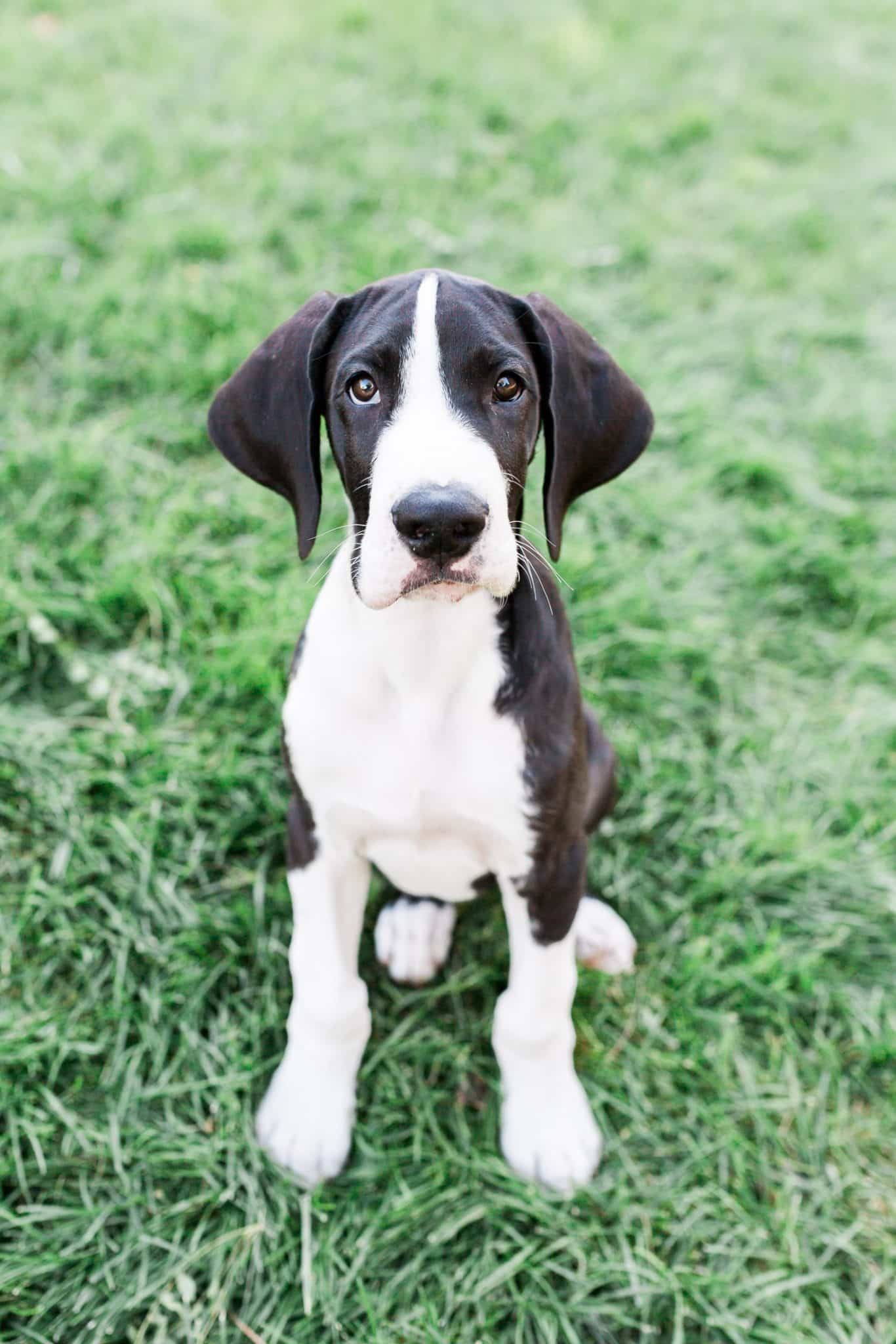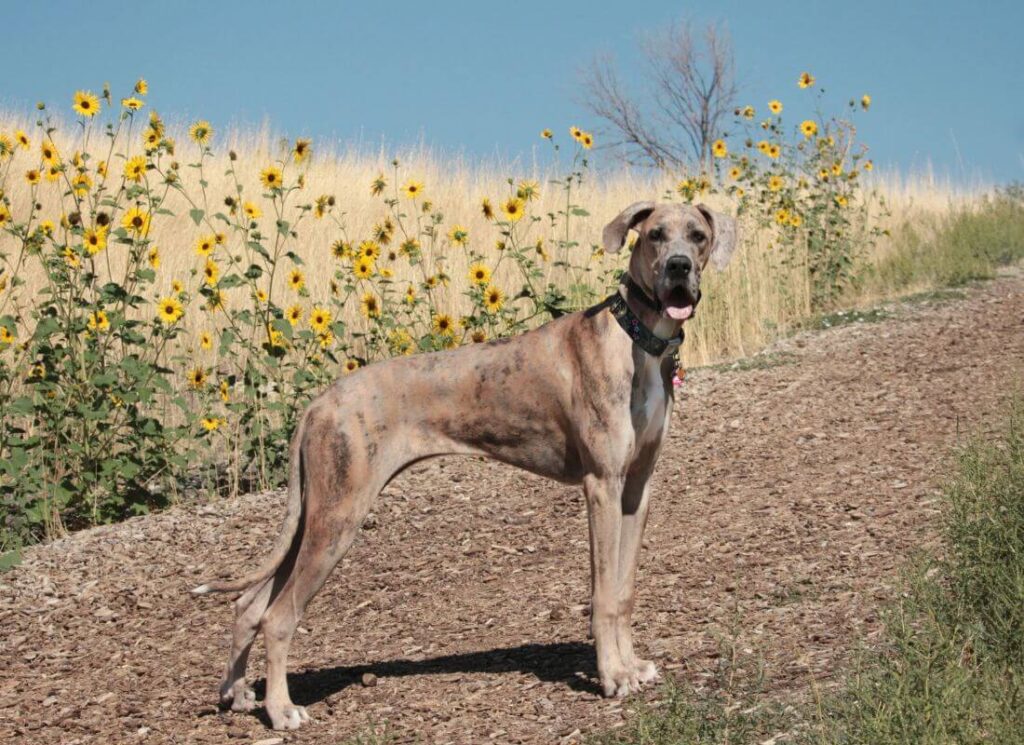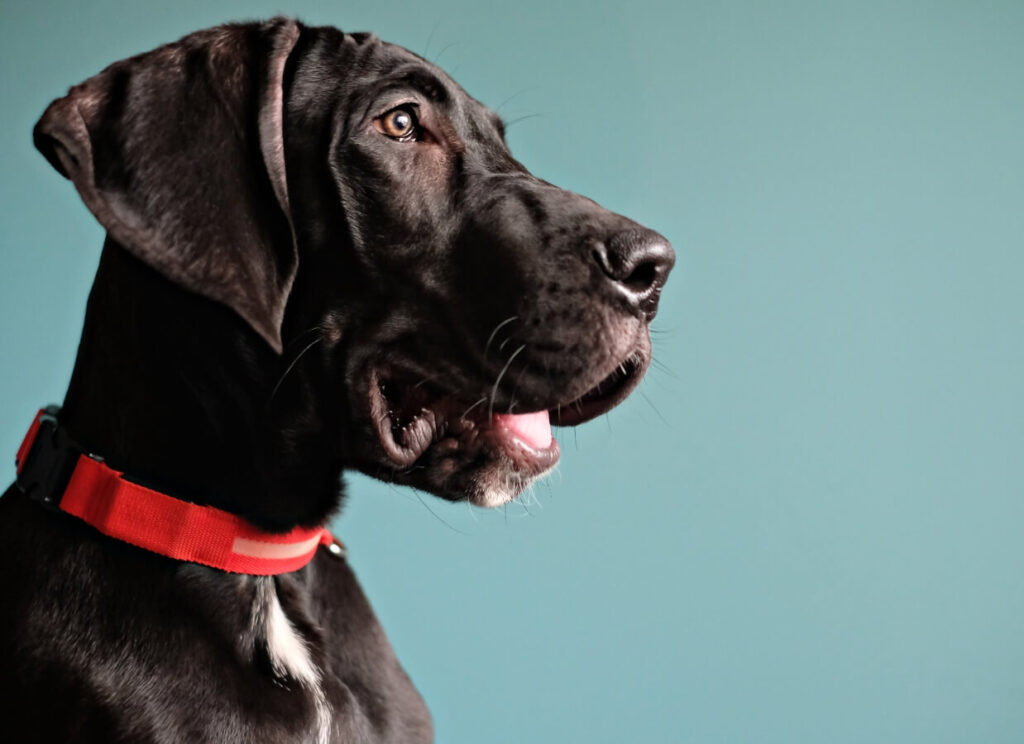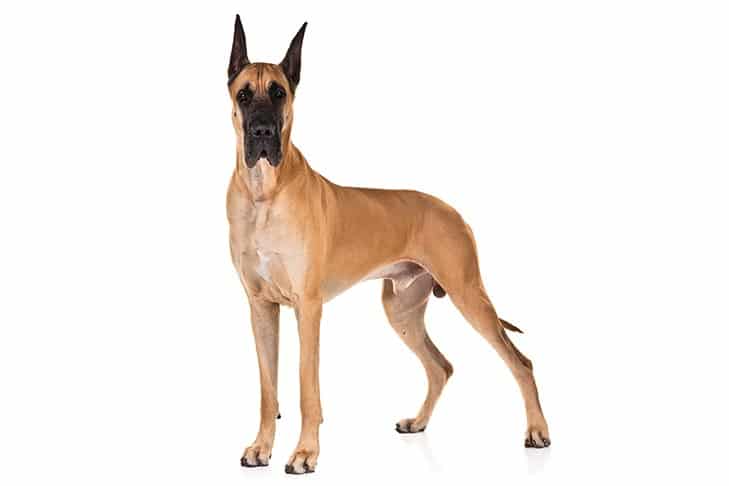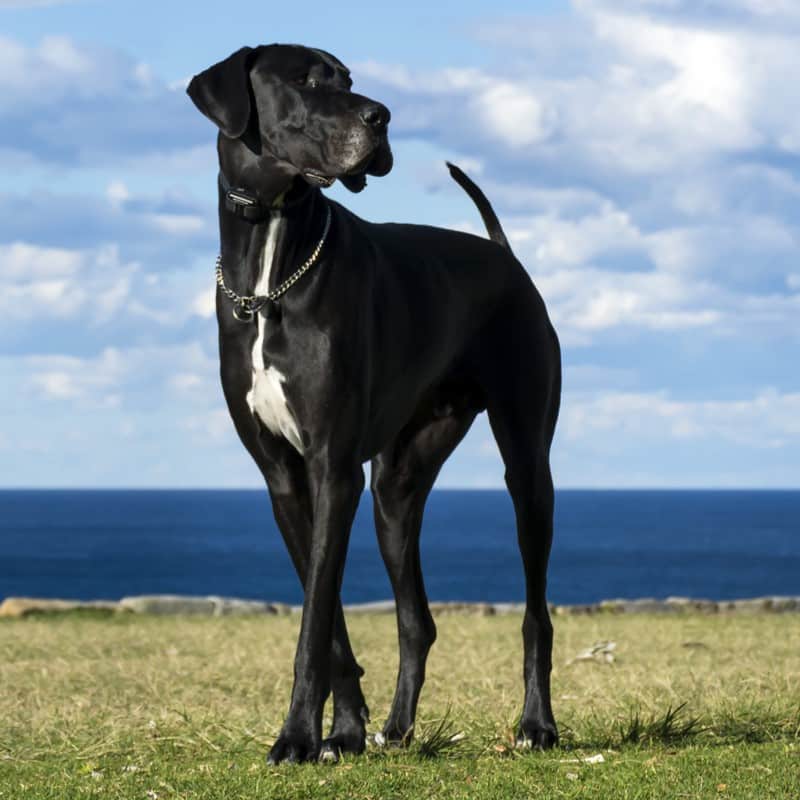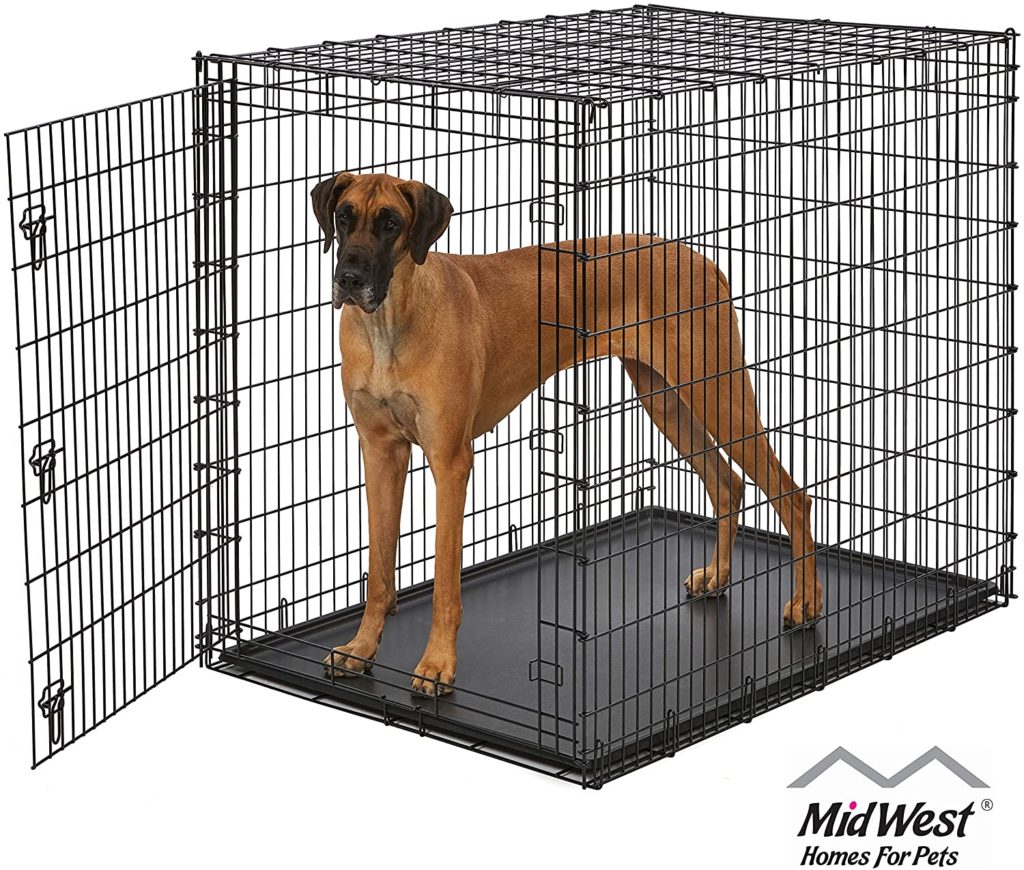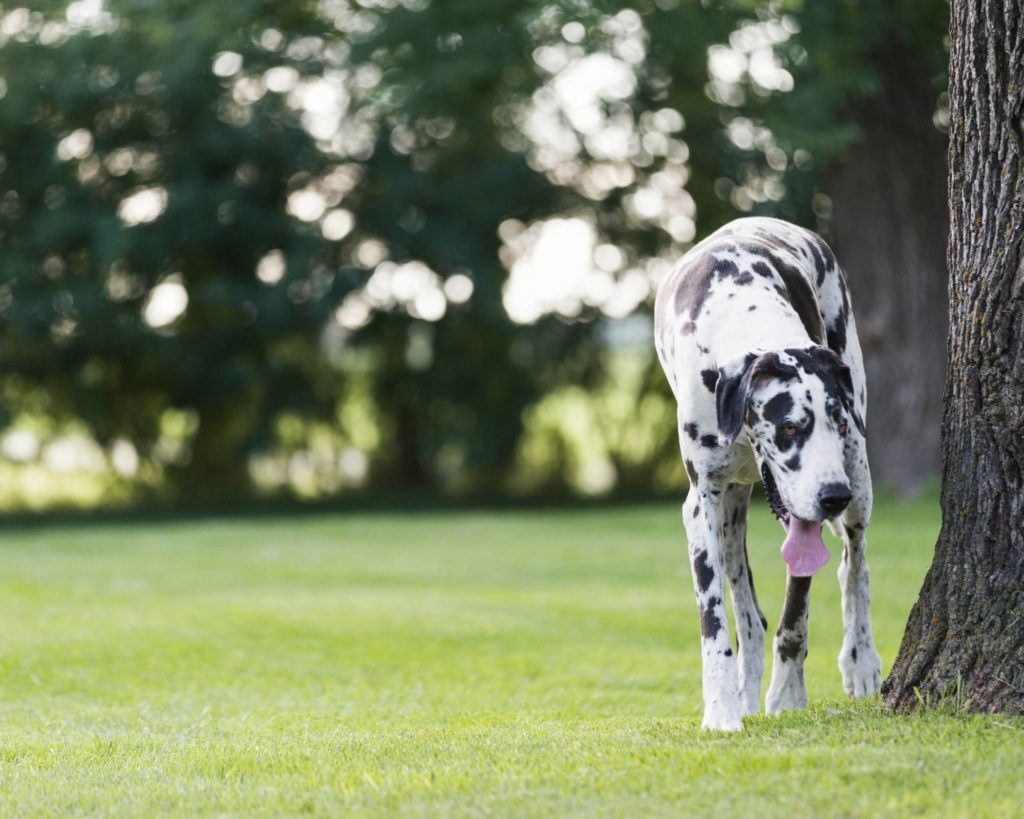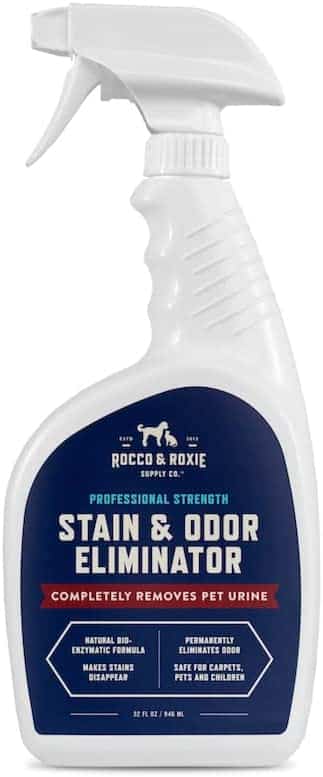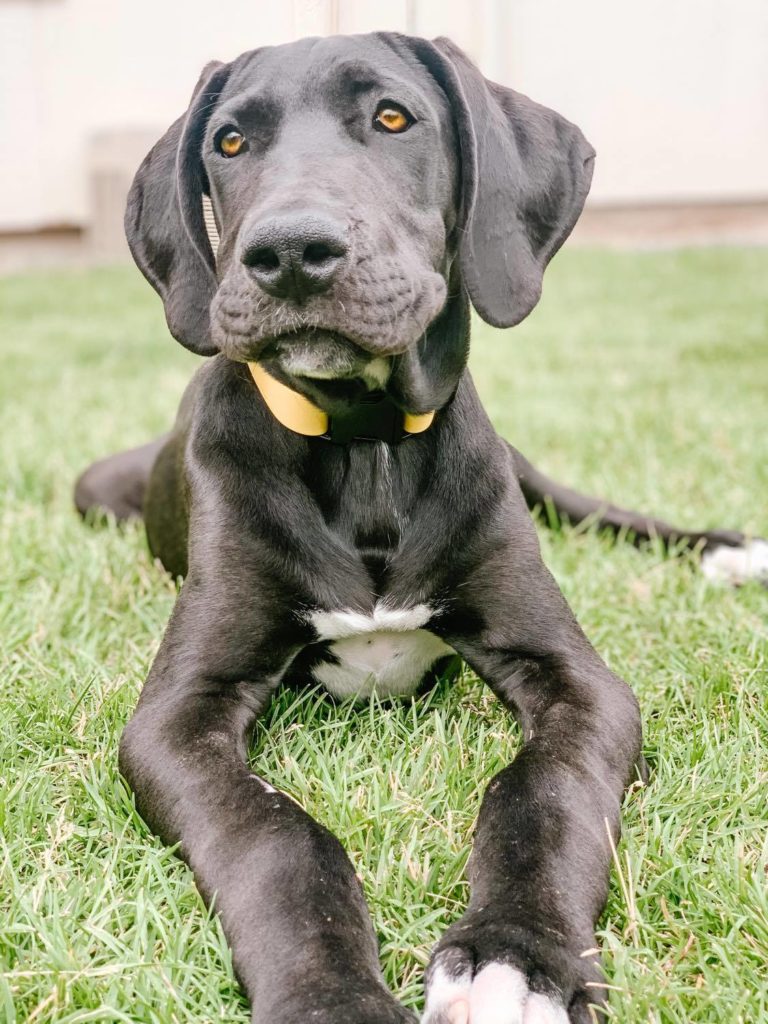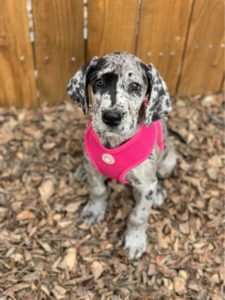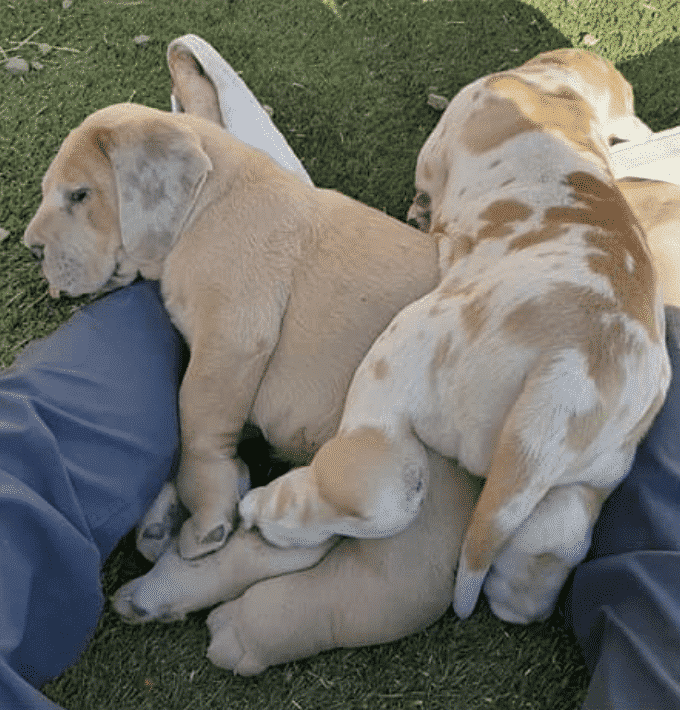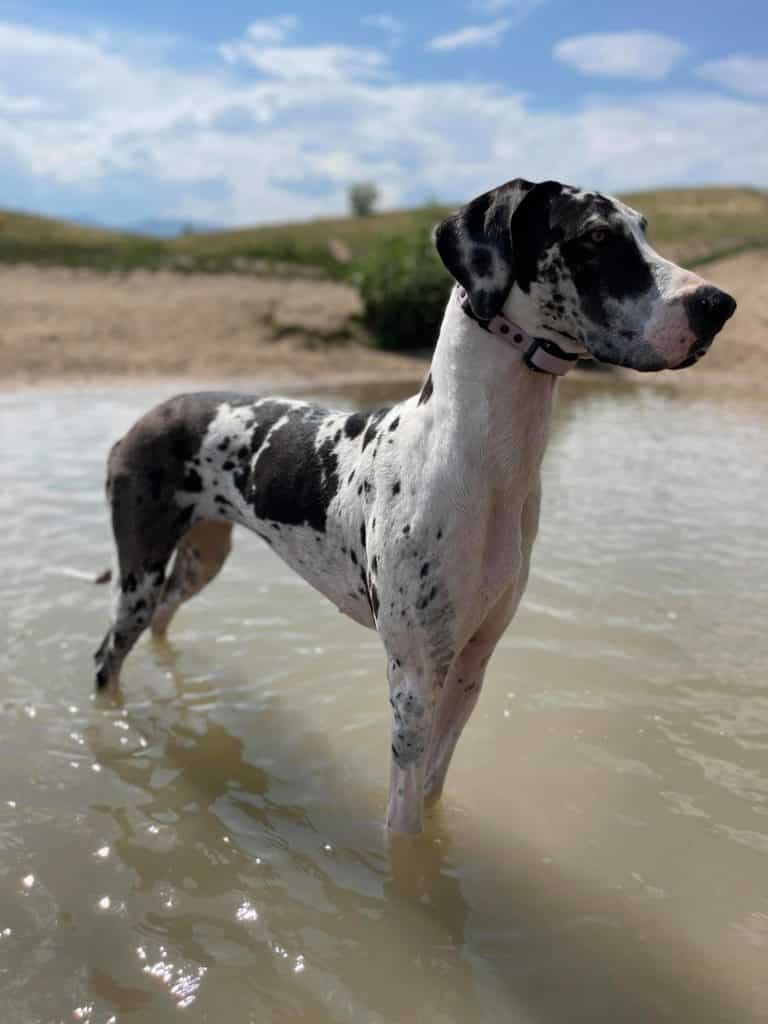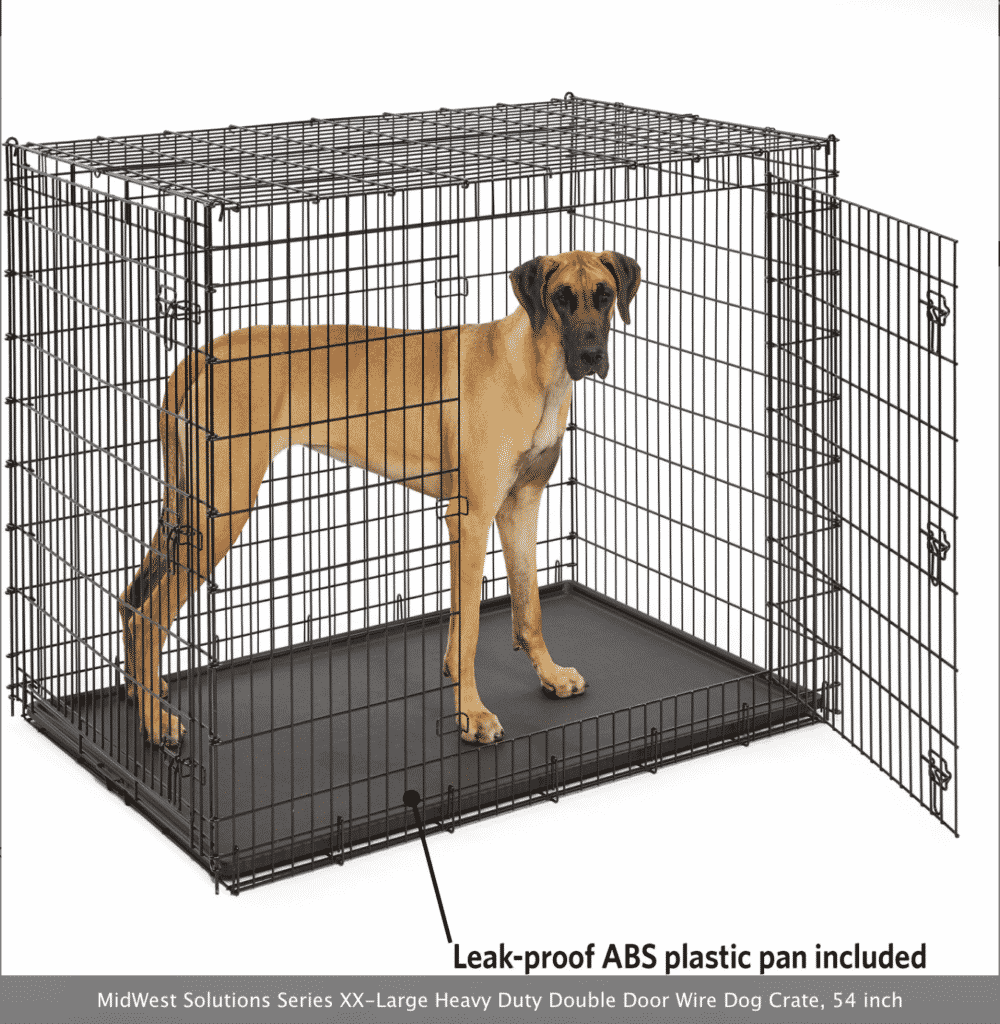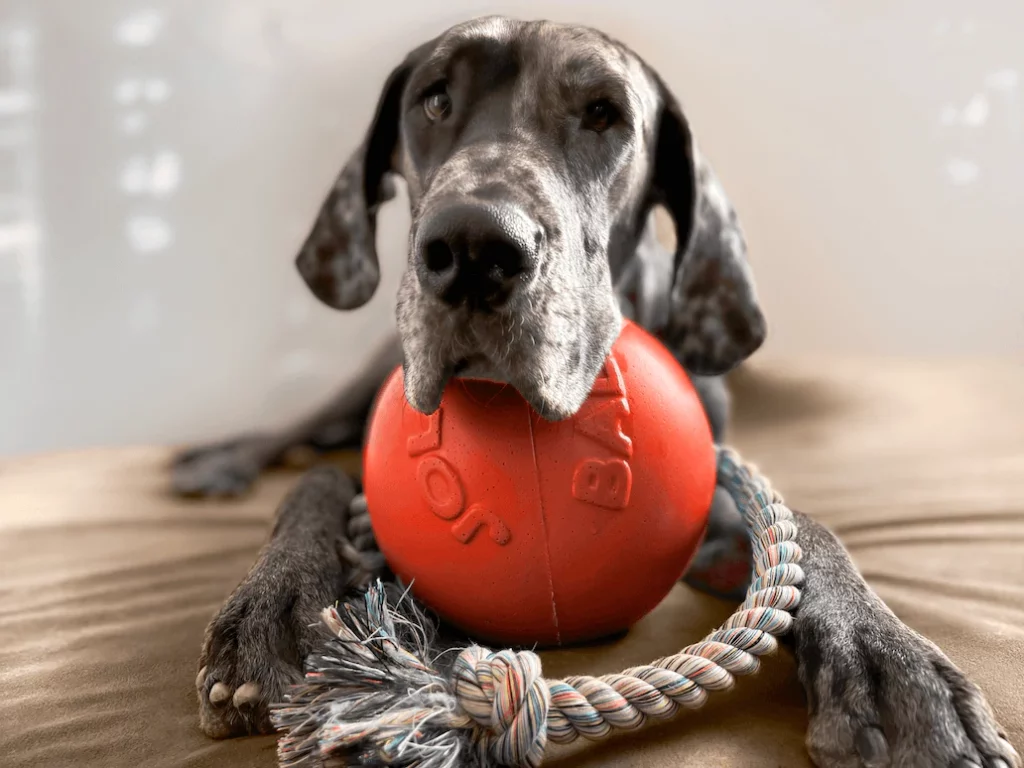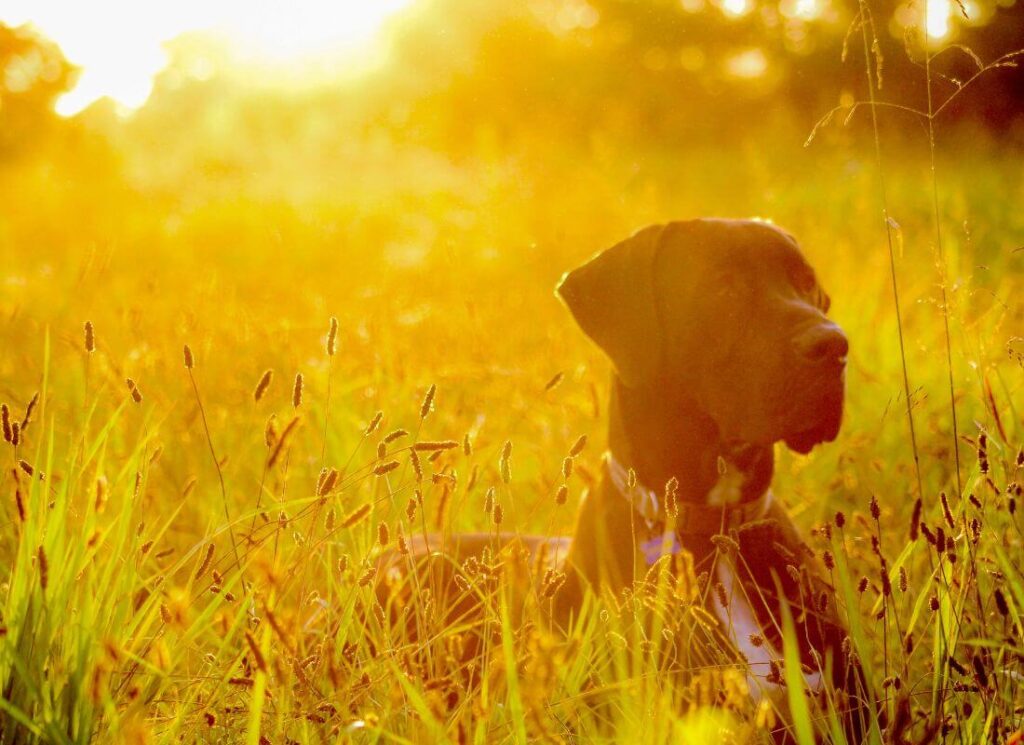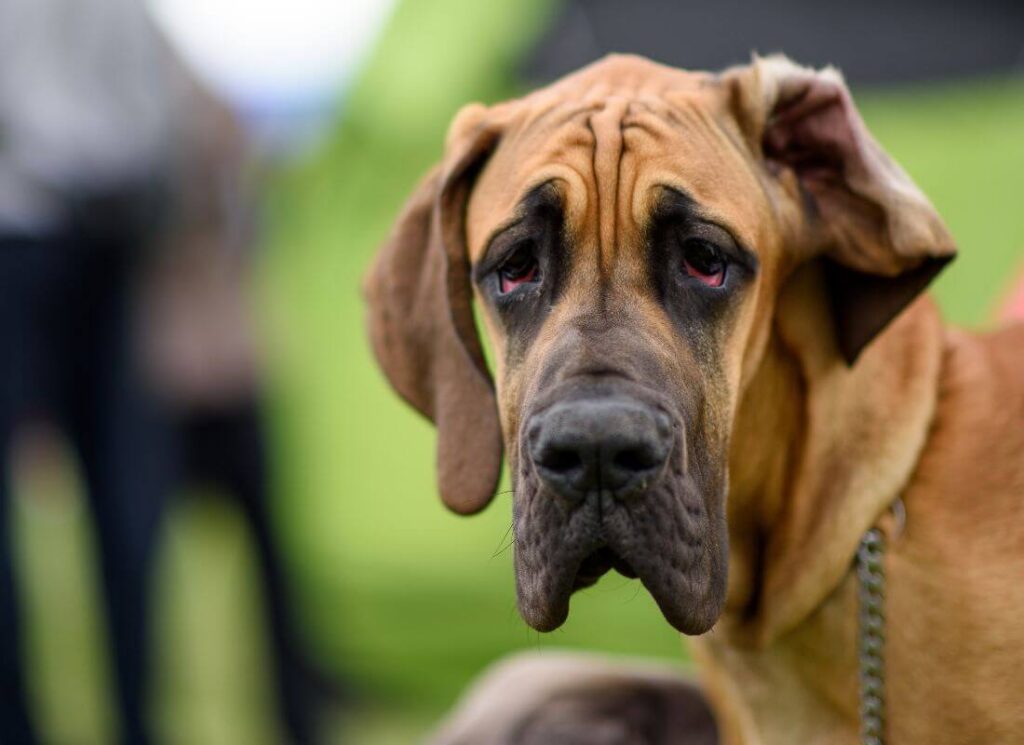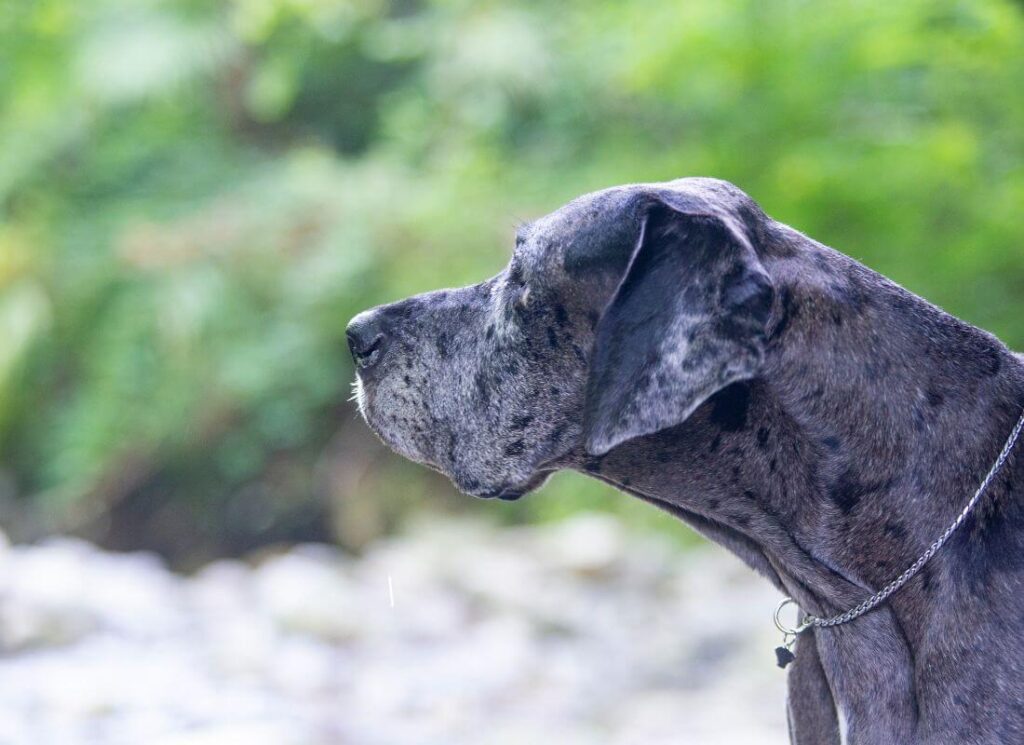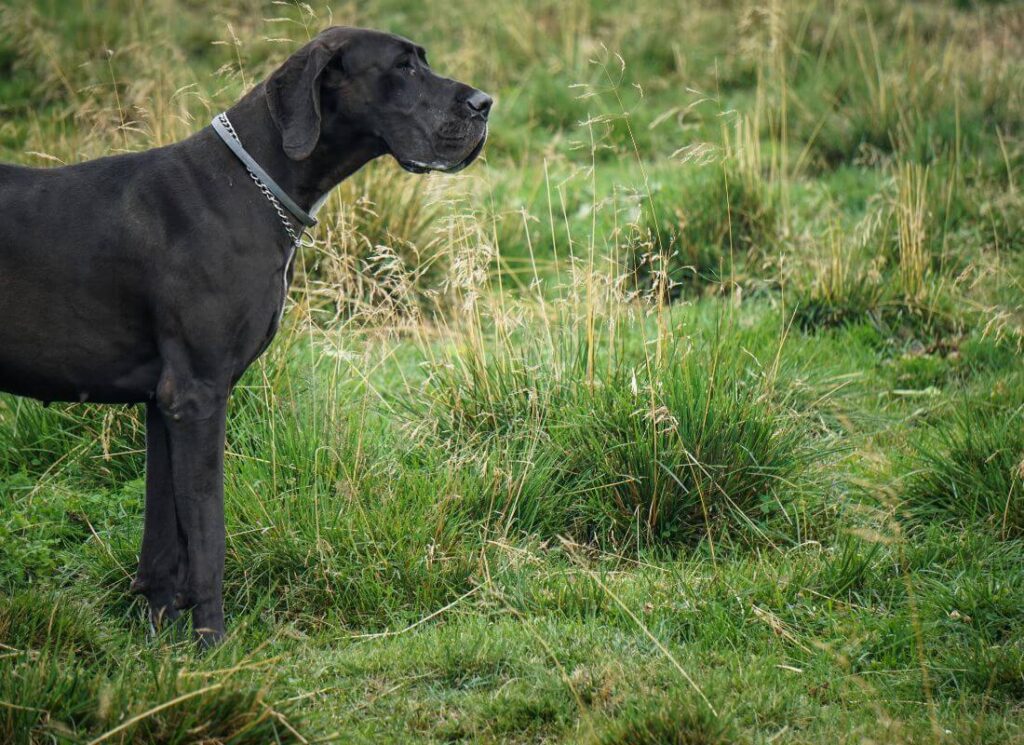Today we’re going to do our Royal Canin Giant Breed Dog Food Review!
Unlike other dog food review sites, we’re going to deep dive into the science of kibble-based nutrition and give you real information that will help you make a healthy choice for your giant dog.
Giant breed dogs are prone to growth, joint, and heart issues, so it’s important to feed them a diet that will help them grow correctly and keep their joints and heart healthy.

Royal Canin has made a line of dry dog food geared specifically towards extra large dogs, with precise nutrition and balanced energy content to support healthy development during each of the three growth stages:
- Royal Canin Giant Puppy (For the initial growth stage, up to 8 months of age)
- Royal Canin Giant Junior (For the second growth stage from 8-18 or 24 months of age)
- Royal Canin Giant Adult (For giants that are 18-24 months of age or older)
Let’s take a closer look at the Royal Canin size, health, and targeted nutrition food line and see how this dog food rates for giant dogs (especially Great Danes)!
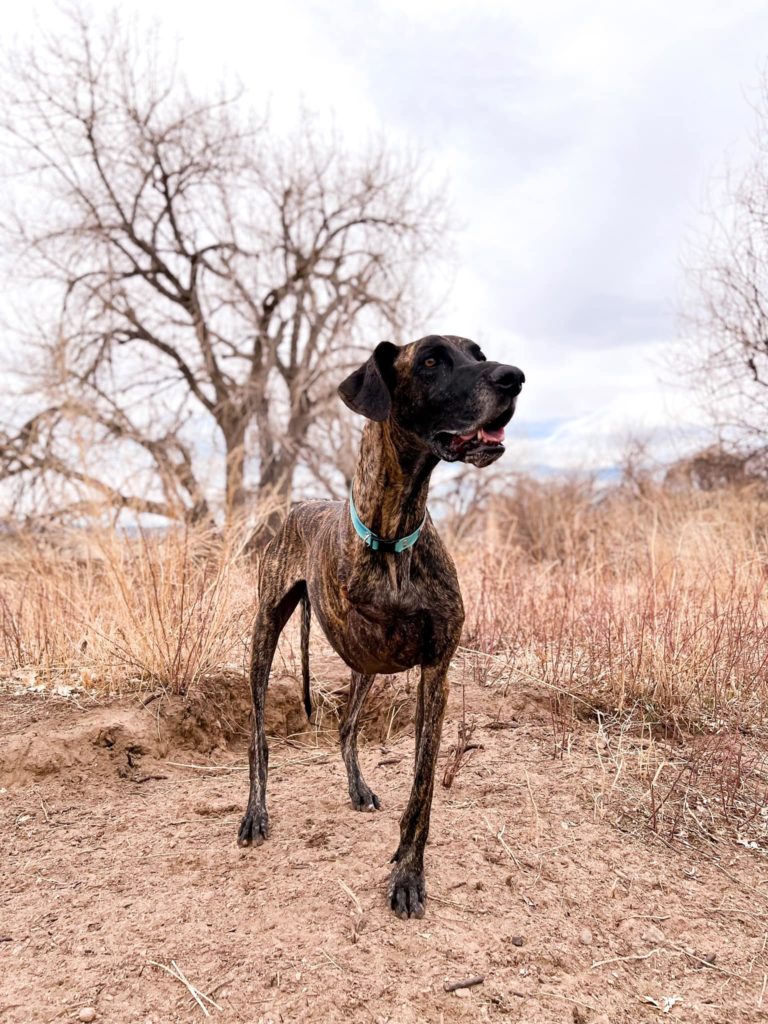
Royal Canin Giant Breed Dog Food Review
My Personal Review of Royal Canin Giant Food
No good dog food review is complete without a personal touch! As you will learn below, it took me a while, as a “boutique dog food snob” to come around to Royal Canin, but I’m so glad I did.
Pro Plan and Royal Canin are my personal top two picks for Great Danes.
RC Giant Adult food SMELLS LIKE MEAT! Most kibbles are dry and smell like cardboard or sour milk.
While we humans may not love the smell of this food for ourselves, we cannot deny that it definitely smells like something a dog should be eating.
I like knowing that I’m giving my dogs meat, not dried-out stale-smelling kibble made primarily of peas, lentils, and rice.
Why is Grain-Free Food Bad for Great Danes?
Hip Dysplasia, Everything You Need To Know
I’ve never seen a ‘sensitive’ tummy clear up so fast! RC giant formula foods are magic for dogs with chronic loose stools. Don’t believe me?
Read the literal thousands of positive reviews. Many people indicate that they have had this same experience, after battling chronic loose stools and itching for years.
My dog’s stools on Royal Canin foods are small and infrequent, and my super-sensitive male is no longer littering my lawn every other week with soupy poop bombs.
I would compare Royal Canin growth formulas stools to what we see from raw-fed dogs.
Optimal stool quality is one massive benefit of feeding RC foods with targeted nutrition to giant-sized dogs.
By-Product meal likely contains a fair amount of bone: bone is known to help raw-fed dogs firm up loose stools.
Between the by-product meal and the added fiber, it’s no surprise that sensitive tummies are a thing of the past for dogs fed this brand.
Royal Canine Giant Kibble Size
The adult formula from this line is made into huge kibbles. Each one is about 2/3 the size of a charcoal briquet!
This promotes slow eating, healthy digestion, and correct chewing, which is good for digestive health and may reduce bloat risk.
Our Danes absolutely LOVE the giant kibbles in Royal Canin giant formulas.
I’ve read that some dogs are hesitant because the size is unusual; I recommend that you hand feed a few (as if they were treats) to get your dog started.
I also recommend measuring this food on a scale. It will be much more accurate than scooping the large kibbles into a cup. Because this is so nutrient-dense, it is easy to overfeed! Less is more, with Danes.
Tips & Tricks for Feeding Great Danes & Keeping them Lean
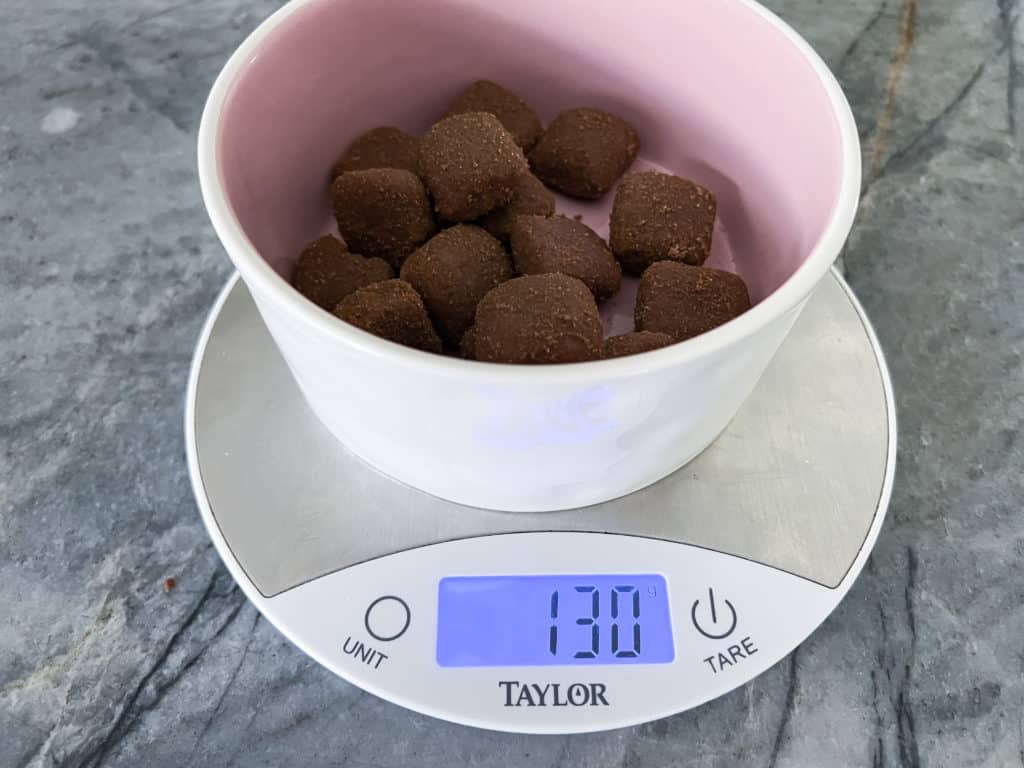
Is Royal Canin Giant Actually a Good Dog Food?
Some people who wish to sell you boutique dog food (primarily natural foods pet stores) will say anything to convince you that what they sell is better quality.
You may hear things such as “Royal Canin is full of fillers, trash, and carbs” or “you might as well feed your dog McDonald’s!” from pet owners, commission-driven salespeople, and people with no qualifications in canine nutrition.
The truth is that Royal Canin is extremely high-quality dog food; they just don’t use fancy marketing buzzwords. Royal Canin foods are recommended by veterinarians and veterinary nutritionists worldwide.
Every ingredient in Royal Canin’s foods is there for a good reason, including icky-sounding things such as “by-product meal” and “corn”, which we will dig more into the actual science of this below.
Royal Canin hires Ph.D. veterinary nutritionists to formulate their recipes, which are based heavily on decades of peer-reviewed science and research.
Compare this to many boutique brands, which don’t have veterinary nutritionists on staff at all and perform bare minimum (if any) feeding trials, testing, or peer-reviewed research.
As you read our Royal Canin Giant food review today, we hope this information helps guide you towards a science-backed choice.
We will be digging into those ‘nasty’ ingredients, the science of canine nutrition, what a natural diet for a dog actually looks like, and more. Read on, friends!
Is Large Breed Food Necessary?
Should Puppies Eat Puppy Food or Adult Food?

Is a by-product meal bad in dog food?
Many people mistakenly believe that meat meals and meat by-product meals are bad. Royal Canin uses a lot of them.
By-Products are the parts of the slaughtered animal that dogs need and want in their diets.
This can include bones, necks, cartilage, feet, tendons, and organs. All of these by-products are often included in natural raw diets for dogs.
For example, look at the ingredients list from this Raws Paws Raw Dog Food Beef Blend:
Beef Round, Beef Meat, Green Beef Tripe, Beef Bone, Beef Heart, Beef Tongue, Beef Liver, Beef Kidney, Beef Spleen, Beef Suet.
These ‘leftovers’ are highly nutritious and contain necessary minerals, vitamins, proteins, amino acids, and even things such as natural Glucosamine for joint health.
Compare that to fresh deboned chicken, which is 70% water.
When processing ‘by-products’, very little of the slaughtered animal goes to waste. This is a win-win for your dog, for the environment, and for the animal who was farmed to be processed into pet food.
The environmental impact of throwing out ‘by-products’ because “natural” food brands want you to believe that organs, cartilage, necks, fat, skin, and the remaining tissues are dirty, gross, and disgusting is, well, tragic.
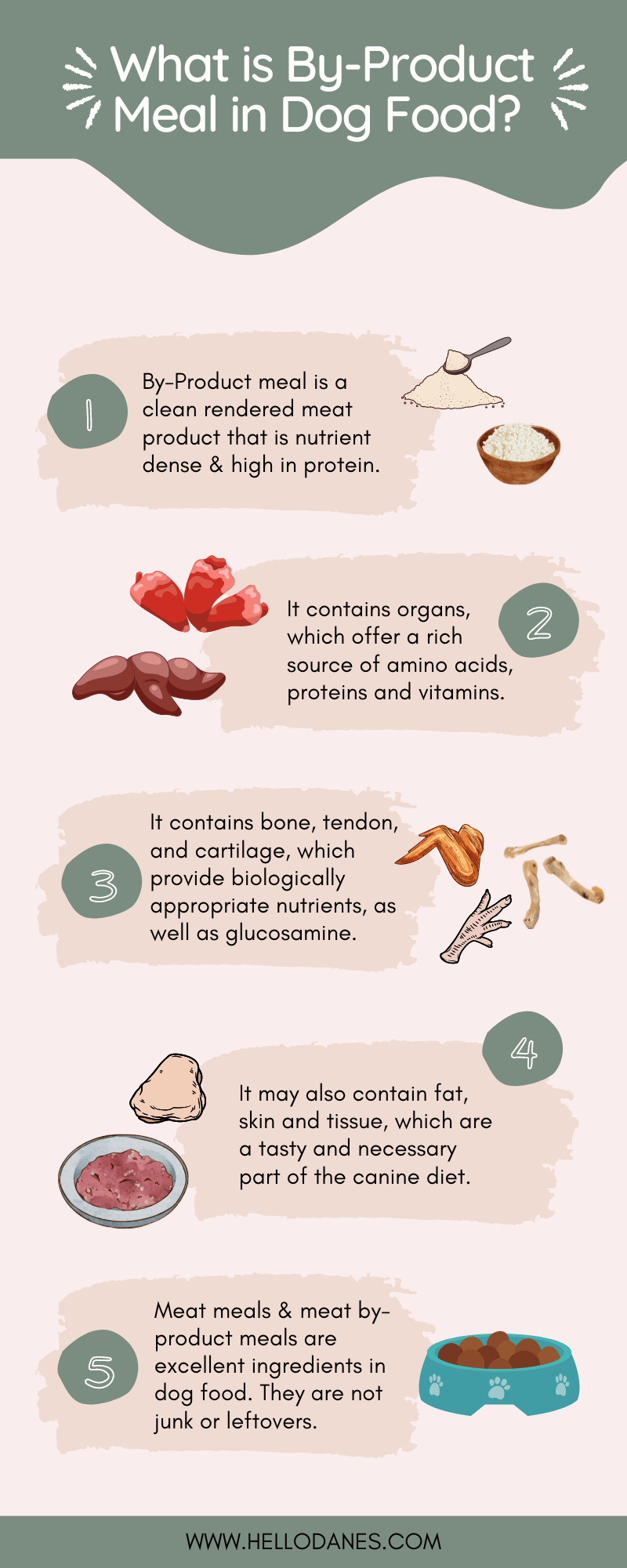
If a food company is marketing to what you want on your dinner plate (“Fresh deboned chicken, lentils, blueberries”) vs. what your DOG wants (“By-product” liver, cartilage, tissue, skin, and bone), ask questions.
The reality is that by-product meals are highly digestible and nutritious, and they’re an important part of a giant breed dog’s diet.
Dare we say that “by-products” are more biologically appropriate for dogs to eat than just “de-boned chicken” and some blueberries?
If you read your dog food ingredients label and see things such as whole mackerel (which includes the head, eyes, tail, scales, bone, and organs), pork kidney, chicken liver, blood meal, or lamb tripe, you are seeing by-products that were purposefully named to appeal to your human taste.
Fun Fact: foods containing rendered meat products (meals) in the first ingredients were shown to reduce bloat risk by 53%!
You WANT to see meat meal and/or meat by-product meal in your dog food.
How does dog food math work?
By law, dog food companies must list ingredients in order of their weight prior to extrusion.
So let’s do the math. Fresh meat is 70% water. It’s pretty heavy! Once you cook it, not much is left.
If you see ‘deboned chicken’ or ‘fresh salmon’ (for example) at the top of the ingredients list, with no meat meals, chances are that the finished kibble may actually have a higher content of meatless products (such as peas or lentils) than it does real meat.
Even if the bag says ‘meat is the 1st ingredient’!
On the flip side, by-product meals and meat meals are already rendered and dehydrated before extruding, so if they are at the top of the ingredients list when they went in, they likely remain as the bulk of the nutrient profile and composition in the finished product, too.
Meat meals and by-product meals contain a concentrated source of animal-based protein, nutrients, and joint support in other words. You actually WANT to see them in the first ingredients!
Royal Canin relies on by-product meals because they are nutrient-dense and species-appropriate.
By-products are regulated and no, they don’t contain “blood and guts scooped from the floor” or “euthanized animals“.
Have you ever fed your dog a bully stick, pig ear, rawhide, chicken paw, or dehydrated liver training treat? You fed your dog a by-product!
Is my Great Dane Puppy Knuckling?
Gentle Giants Dog Food Review: Good or Bad?
Is chicken fat bad for Great Danes?
I will admit to being very alarmed seeing fat at the top of the ingredients list for both Giant and Great Dane Royal Canin dry dog foods.
One study found that dogs who ate food with fat in the first 4 ingredients were more prone to bloat.
What that study also revealed, however, is that foods with rendered meat meals lowered the risk of bloat.
Tufts University Study
Those studies did not differentiate between foods where fat was listed in the top four ingredients when fresh meats were used, vs. foods where meat meals and meat by-product meals were used, and how that might affect the “avoid fat in the first 4 ingredients” rule.
It also did not discuss ingredient splitting, which can artificially adjust how and where fat shows up in the ingredients list.
When a company uses a large amount of concentrated, high-protein meat meal or meat by-product meal there is nothing (such as water weight from fresh deboned chicken) to push the fat further down on the list.
So in that case, fat may show up in the #2 or #3 spot, simply because they kept the formula meat-focused and didn’t also then utilize ingredient splitting to keep the fat lower on the list.
If they used mostly or all fresh meat (70% water) and the animal fat lands in the top 4 spots, tread cautiously! Tread even more cautiously if you see ingredient splitting.
After speaking with the Royal Canin directly about this, my mind has been put to ease here.
Animal fat, before being cooked and extruded into kibble is a heavy product. It will weigh a fair amount compared to other ingredients but will make up much less of the diet once it’s been extruded. Especially when it’s paired with heavy meat meals.
Fat IS a necessary part of the canine diet. It tastes good to dogs and is a great source of fats and omegas which are essential for skin and coat health, development, and a strong immune system.
What matters the most is the nutrient profile of the food after it has been extruded and cooked. For this reason, it’s incredibly important to ONLY choose foods that were formulated by board-certified Veterinary Nutritionists.
How Ingredient Splitting in Dog Food May be Harming Your Dog
Veterinary Nutritionists understand what nutrition looks like going into the kibble and how each vitamin, mineral, enzyme, acid, or protein works with a dog’s live digestive system and can help or harm them.
Their allegiance to formulating the product correctly is based on decades of science and research. They formulate for health, not what sells well because it “looks good” to the average, uneducated consumer reading a label.
Dogs need 22 different amino acids to live a healthy life, 11 of which they can produce on their own. The other 11 must come from their diet, some of which are synthesized naturally from other nutrients in that diet.
When we see meat by-product meals, meat meals, and chicken fat in the first ingredients, we can be assured that the diet is not only meat-based and high-quality but completely appropriate for canine health.
The Best Foods for Great Dane Puppies 2022
The Best Foods for Great Danes 2022
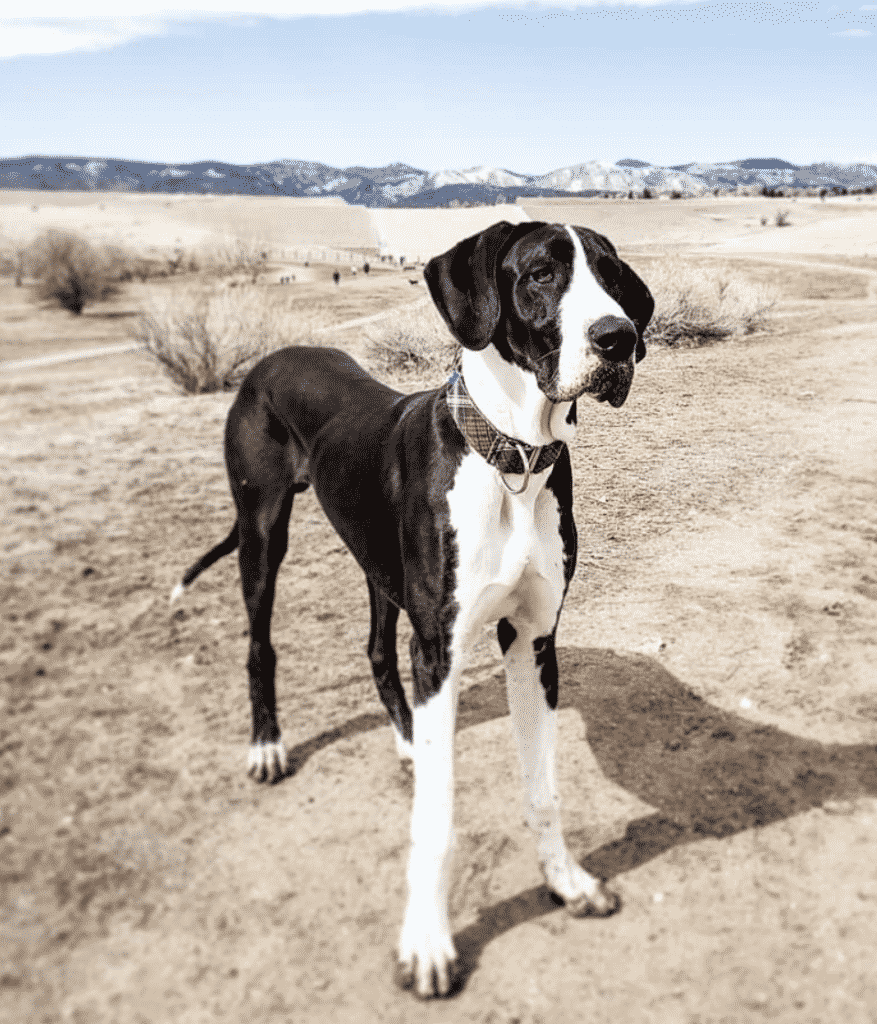
How Can Royal Canin be Healthy if it’s Full of Junk?
This company chose these ingredients because they are the best for your giant dog’s health–not because they’re cheap or fillers.
The concept of ‘fillers’ is a myth.
“All our products are researched and developed not by trends in human nutrition or preferences of the pet owner, but through innovative nutritional science and the observation of cats and dogs.“
Royal Canin
Read about Royal Canin’s “Nutrition First” philosophy HERE.
As a former ’boutique foods snob’ who was previously completely disgusted by Royal Canin foods, I have to say this:
Royal Canin has chosen actual, science-backed canine health and nutrition over marketing an appealing and humanized ingredients list.
I like that.
Royal Canin Giant Dog Food Line
When choosing this formula for your lovable giant dog, we recommend following the manufacturer’s instructions for transitioning between life stages.
Royal Canin Giant Puppy – Up to 8 Months
This formula is made for giant puppies that are under 8 months of age. It aids in healthy bone development, proper digestion, joint health, and energy levels.
Many people are confused by the higher protein level in Royal Canin giant breed, which goes against common advice to “keep protein levels below 26%”.
The protein myth has been debunked by many experts in the canine nutrition field.
Puppies are growing at an exponential rate and their bodies are using amino acids (the building blocks of protein) to construct new tissue, including muscle, bone, hair, skin, and organs.
Feeding a lower protein ‘adult’ food deprives them of the nutrition they need to thrive. We see this in play with young Great Danes who appear chronically malnourished and skinny or that may be slow and heavy with no muscle tone.
Correct calcium to phosphorus ratios are much, much more important.
Crude Protein 32.0% min
Crude Fat 12.0% min
Crude Fiber 3.4% max
Moisture 10.0% max
Calcium 1.1% min
Phosphorus 0.92% min
Vitamin E350 IU/kg min
Glucosamine 371 mg/kg min
Chondroitin SulFate 3.75 mg/kg min
Caloric Content
3,556 kcal/kg, 341 kcal/cup
Royal Canin Giant Junior 8-24 months
This formula should be fed from 8-18 or even 24 months. Royal Canin giant junior dry dog food was formulated specifically to meet the needs of dogs in the second growth phase.
This is when rapid bone growth slows and the dog begins to develop more robust muscles and a mature stature.
Royal Canine giant junior dry dog food is extremely palatable and correctly balanced for this second growth stage. Many giant junior dogs at this age become ‘picky’ and their appetite slows.
This is normal! Giant junior dogs aren’t actually picky, they just have different nutritional requirements than a puppy does.
Guaranteed Analysis
Crude Protein 29.0% min
Crude Fat 14.0% min
Crude Fiber 3.4% max
Moisture10.0% max
Calcium 1.1% min
Phosphorus 0.92% min
Vitamin E350 IU/kg min
Glucosamine 371 mg/kg min
Chondroitin Sulfate 3.75 mg/kg
Caloric Content
3,649 kcal/kg, 307 kcal/cup
Royal Canin Giant Adult – 18+ Months
This formula should be fed from 18-24 months on.
We recommend keeping Great Danes (among the largest of the giants) on the Royal Canin giant junior dry dog food formula until 24 months of age (or 18 months if neutered/spayed) and then transitioning to the adult formula.
Crude Protein 26.0% min
Crude Fat 18.0% min
Crude Fiber 3.9% max
Moisture 10.0% max
Taurine 0.14% min
Glucosamine446 mg/kg min
Chondroitin Sulfate4 mg/kg min
Caloric Content
3958 kcal/kg, 427 kcal/cup
Nutrition for Giant Dogs
Raising a giant puppy and living with any 70+lb dog is a lifestyle that also requires some research.
Here are our top nutrition tips for giant dogs!
DCM & Nutrition, What You Need to Know
Protein levels in Great Dane Food
You may have heard that Great Danes should not have protein above 22-24%.
This is a huge myth and old wives’ tale that was based on poor research and anecdotal speculation many years ago.
Protein helps with lean muscle mass, and since Great Danes are a working breed, they need all the help they can get!
Peer-reviewed studies have also put this myth to rest. Excess calories, unbalanced meals, and poorly formulated nutrition contribute to bone-growth disorders, NOT protein levels in dog food!
CA/PH ratios, amino acids, and the overall formulation are where it’s at. Dogs NEED protein and starving them of it to “hopefully” prevent growth problems isn’t actually solving anything.
Science, folks.
All about Angular Limb Deformity, Often Misdiagnosed as Knuckling
Do Great Danes Need a Lot of Exercise?
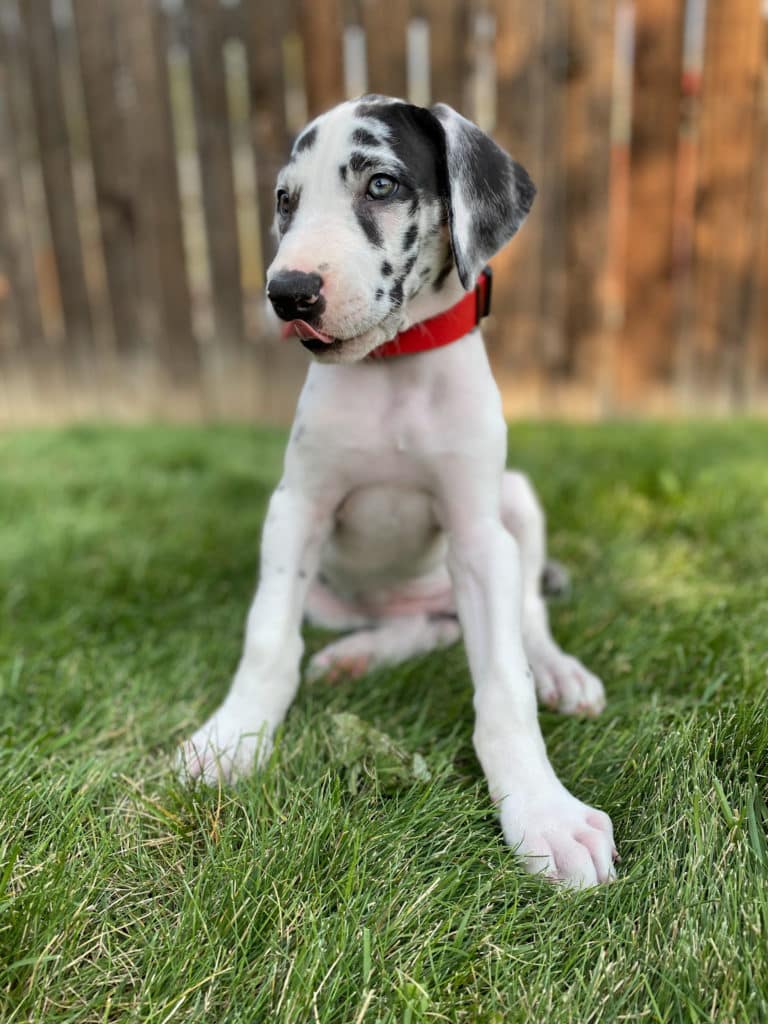
Adult food vs. puppy food for Great Danes
Many people are confused about whether they should feed adult food or puppy food to their giant puppies.
Puppies that are given too much nutrition in the form of calories, especially in kibble foods not correctly balanced by a veterinary nutritionist, may struggle with painful and debilitating growth disorders.
Adult food, which is lower in protein and fat, has often been cited as the solution to this problem; however, giant puppies (including Great Danes) who are only fed adult foods may then be starved of the nutrition they need to support their muscle, skin, and brain development.
Too little nutrition can make them scrawny, bony, and fragile looking.
“Adult only” from puppyhood will make a dog more likely to develop a long and lanky teen body or even look malnourished as a result, especially during the second growth stage when hormones kick in and muscle development needs extra support.
We recommend research-backed large and giant puppy foods that have been substantiated in feeding trials for the growth of 70+lb dogs.
The veterinary community and veterinary nutritionists agree. We’ve done the research for you and feel that science is the way to go when it comes to this decades-old debate.
Growth disorders from improper nutrition
Great Danes and other giant dogs are prone to a number of developmental growth disorders that are made worse by incorrect nutrition.
For this reason, it is essential that you feed your puppy a large or giant puppy diet that has been specifically tailored to meet their growth needs.
Royal Canin Giant Puppy food is designed to support the health of your puppy and giant junior during their crucial first 8-24 months of life when knuckling, HOD, Panosteitis, and Angular Limb Deformities can easily form.
It has the correct balance of nutrients, amino acids, calcium, and phosphorus and when you choose the correct formula for the life stage of your giant junior or puppy dog, the adapted energy intake will promote healthy bones and joints.
My Great Dane is Not Eating, What do I Do?
What are the Best Collars for Great Danes?
Blue Great Danes: Read about this Beautiful Coat Color!
What to look for when choosing food for a Great Dane
You’ll see list after list of the ‘best foods for a Great Dane’, and information about protein levels, fat, meat meals, and calcium.
Much of this information is important and true, however it’s important to keep in mind that countless dog food options are available to you as a consumer, and every single brand is trying to get your business.
Pet stores, sales clerks, “natural pet food shops”, bloggers, influencers and the Dog Food Advisor all want your click and your purchase. They stand to gain from convincing you that they are the best.
“Holistic”, “Human-Grade” and “Super-Premium” are common marketing terms with no legal definition. These are unregulated statements that any food company can apply to their labels.
We recommend choosing only foods that meet the ethical standards outlined by the World Small Animal Veterinary Association (below), to ensure that you are getting the best and most balanced nutrition for your dog.
Is Large Breed Food a Gimmick?
Life’s Abundance Dog Food Review
What are the Best Foods for Great Danes?
These basic ethics standards include the following 4 things you should ask every company before purchasing the food they sell:
- Do they employ at least one full-time board-certified veterinary nutritionist, and is that person formulating and testing the food I’m about to purchase? Can I see their name and credentials?
- Do they own and operate their own manufacturing plants, and in doing so, do they have strict quality measures when it comes to product sourcing and the finished product?
- Do they participate in and contribute to peer-reviewed research?
- Do they utilize feeding trials and tests that substantiate their formulas in real life (not just on paper)? Were digestibility tests completed, or only palatability? Can I see the research results of those trials?
See these questions in more detail below:
As of this writing, only 5 companies can legitimately say they are following WSAVA Guidelines for animal nutrition, without fudging the words to make it look like they are: Purina, Hill’s, Iam’s, Eukanuba, and yes...Royal Canin!
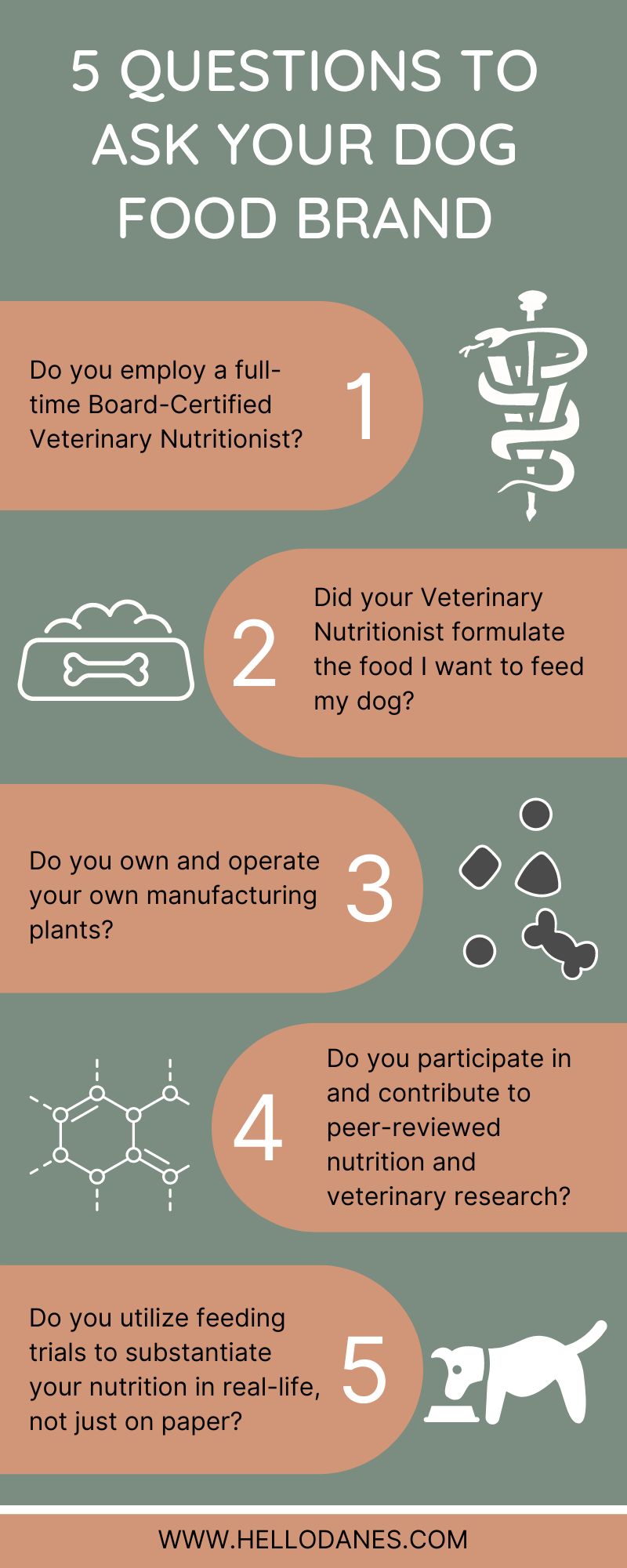
Royal Canin Giant Supplements
This food contains taurine (for heart health), Vitamin C, Vitamin E, Vitamin D, Biotin, and Chondroitin sulfate among others.
Chondroitin provides joint support, in addition to the fish oil in this dry dog food. Remember, natural joint support like this literally COMES from animal by-products!
Chicken paws and cartilage are naturally rich in joint support, for example.
These added vitamins and supplements help support energy needs, joints, skin health, eye health, and more.
Antioxidants and trace minerals boost immune support.
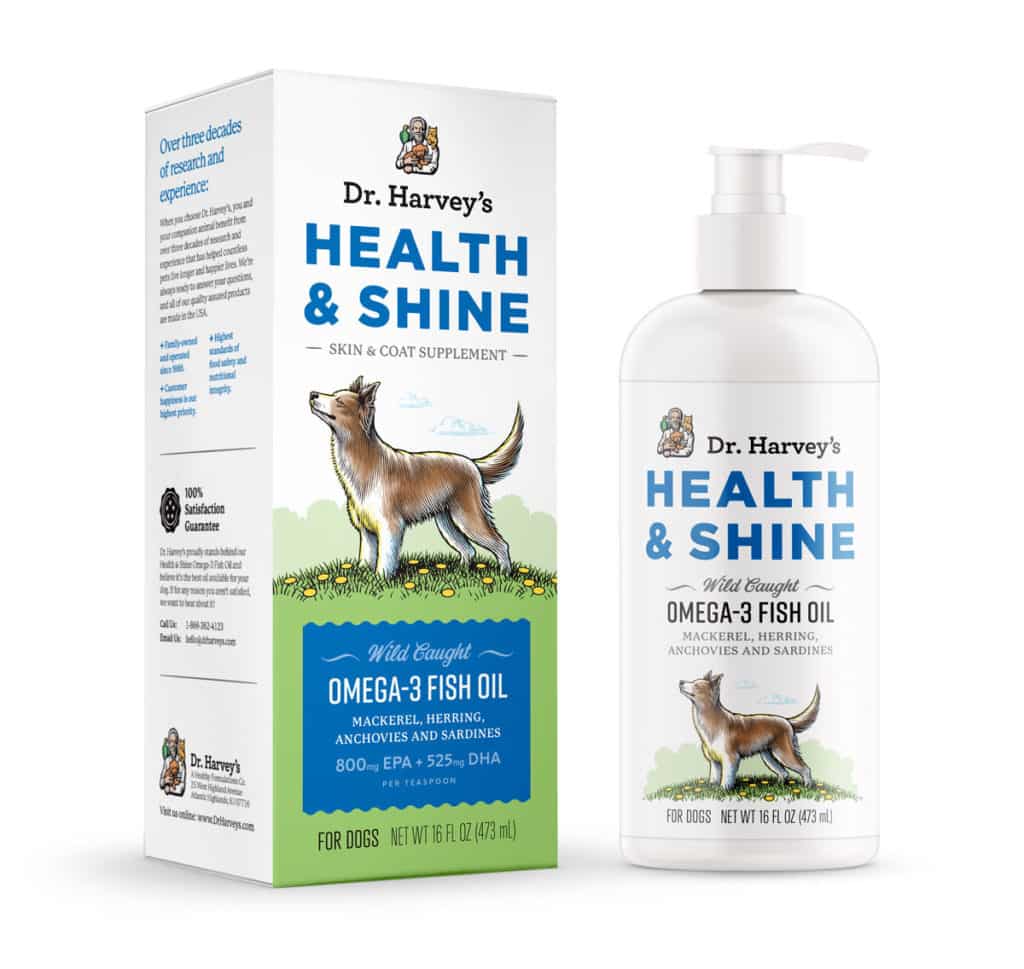

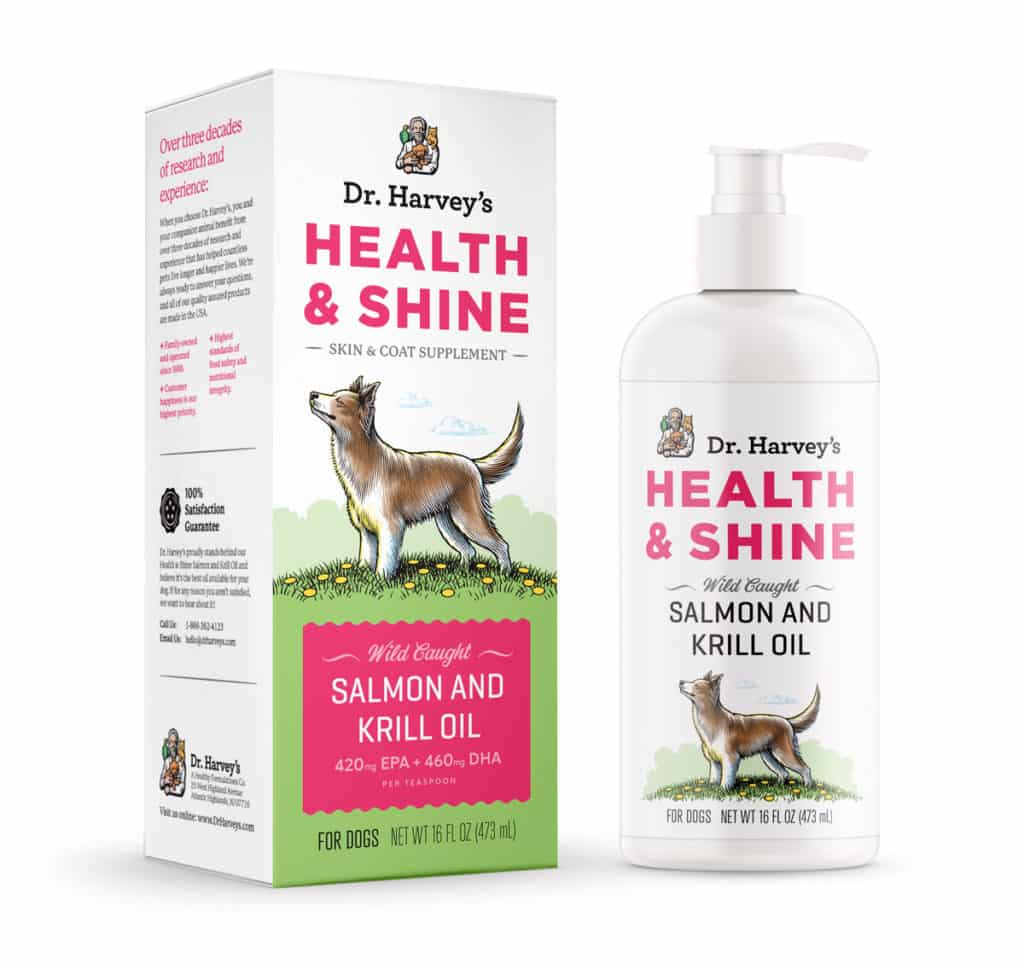
Royal Canin Giant Adult Dog Ingredients List
We’ve posted the actual list below. Here is a breakdown of what you’ll see in this food:
Chicken By-Product Meal – as above this is a high-protein and nutrient-dense meal made up of biologically appropriate tissue, cartilage, bone, and organ.
Chicken Fat – provides fats, proteins, and amino acids. Plus, it’s tasty! Dogs love it.
Pea fiber, corn gluten meal, wheat, and dried plain beet pulp aid in digestion and the production of healthy stool. This combination of substances may be one reason so many Great Dane owners claim that this Royal Canin food eliminates chronic loose stools so quickly. These ingredients also provide additional amino acids and nutrients to help balance the food.
Brewer’s rice is chipped or broken rice that was sifted out during regular rice production. It’s a great source of fiber and energy and a smart place for the manufacturer to lower costs, without compromising quality, so they can put more money into the meat meals.
Brown rice provides additional linoleic acid, omega 6, and fiber for healthy digestion.
I LOVE that Royal Canin Giant Adult has so many different forms of fiber: studies have shown that fiber reduces bloat risk. It also creates optimal stool quality; that’s a win-win.
The balanced energy content from different forms of fiber-rich ingredients is just one reason why dogs fed Royal Canin will have great stools, shiny coats, incredible muscle development, and tons of energy.
Fish oil provides additional omegas for skin, coat, and eye health. Natural flavors make this food even more palatable.
The highly digestible proteins in quality, properly sourced, well-researched by-product meals are a key to this formulation.
Chicken By-Product Meal, Brewers Rice, Chicken Fat, Brown Rice, Corn Gluten Meal, Wheat, Natural Flavors, Dried Plain Beet Pulp, Pea Fiber, Wheat Gluten, Fish Oil, Vegetable Oil, Potassium Chloride, Calcium Carbonate, Salt, Choline Chloride, Vitamins [Dl-Alpha Tocopherol Acetate (Source Of Vitamin E), L-Ascorbyl-2-Polyphosphate (Source Of Vitamin C), Biotin, D-Calcium Pantothenate, Vitamin A Acetate, Pyridoxine Hydrochloride (Vitamin B6), Niacin Supplement, Folic Acid, Thiamine Mononitrate (Vitamin B1), Vitamin B12 Supplement, Riboflavin Supplement, Vitamin D3 Supplement], Trace Minerals [Zinc Proteinate, Manganese Proteinate, Zinc Oxide, Ferrous Sulfate, Manganous Oxide, Copper Sulfate, Calcium Iodate, Sodium Selenite, Copper Proteinate], Taurine, Glucosamine Hydrochloride, Gla Safflower Oil, Marigold Extract (Tagetes Erecta L.), Magnesium Oxide, L-Carnitine, Chondroitin Sulfate, Rosemary Extract, Preserved With Mixed Tocopherols And Citric Acid.
5 Stars, HIGHLY recommend for giant breed dogs over 100lbs.
